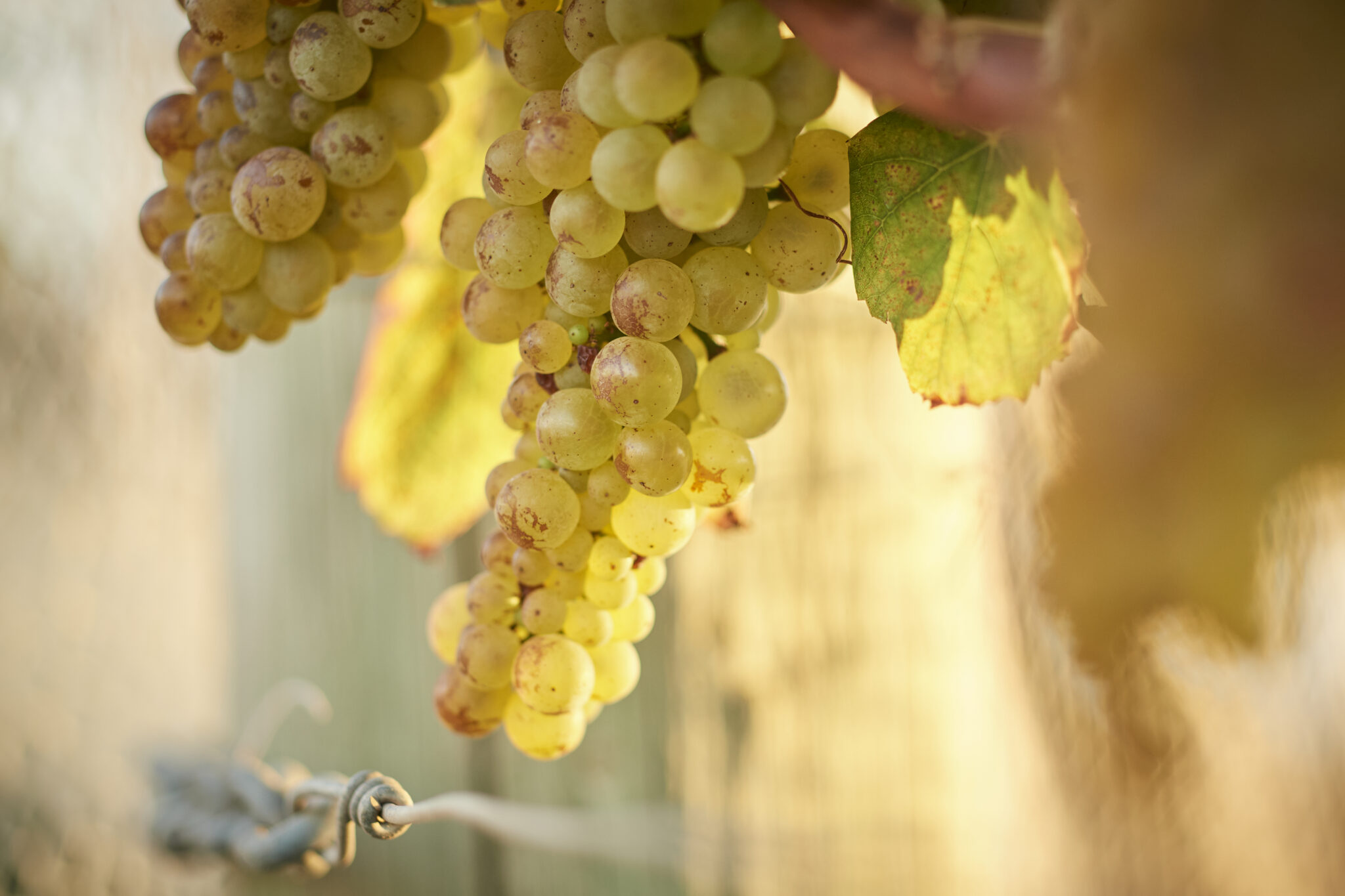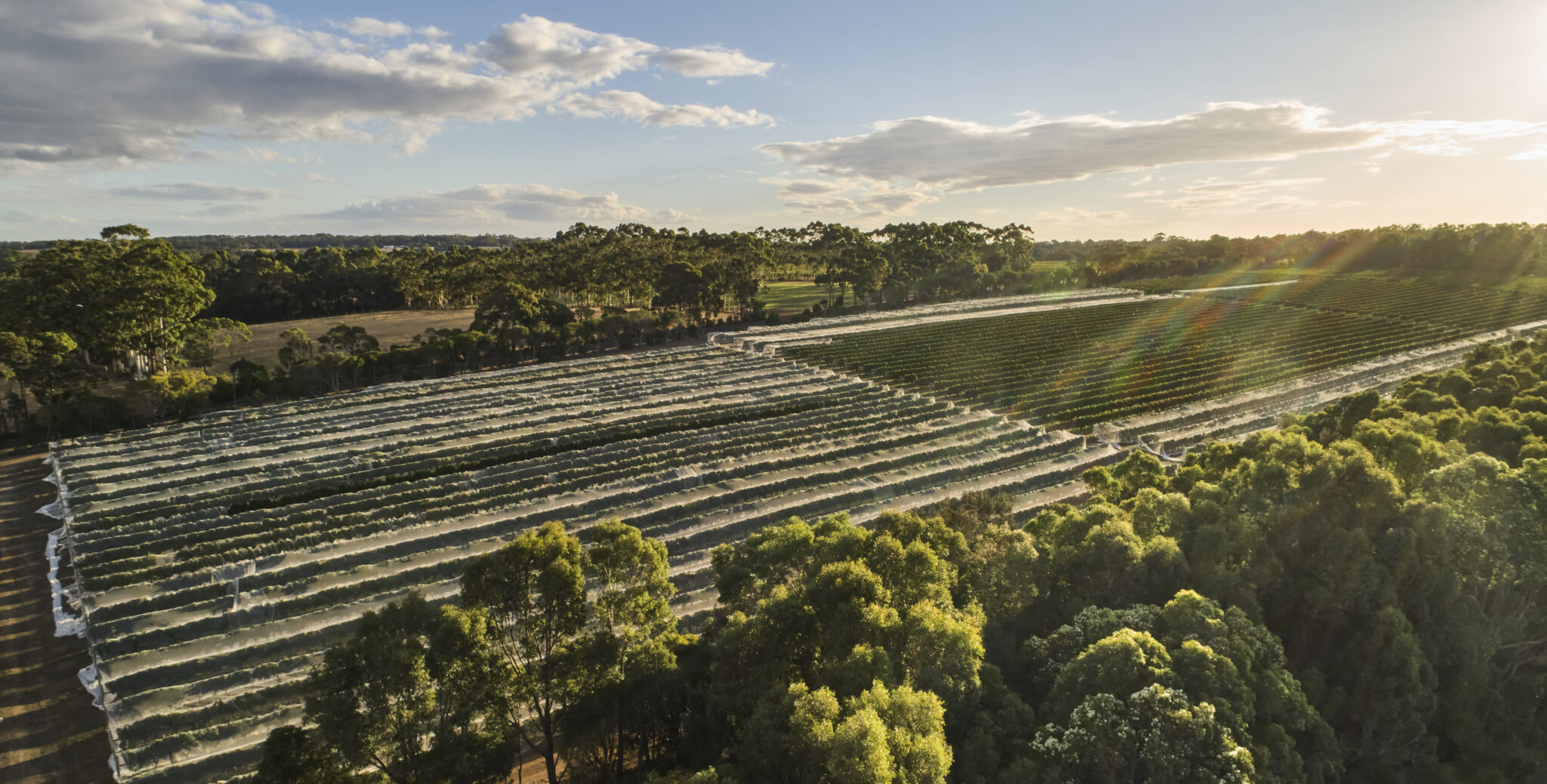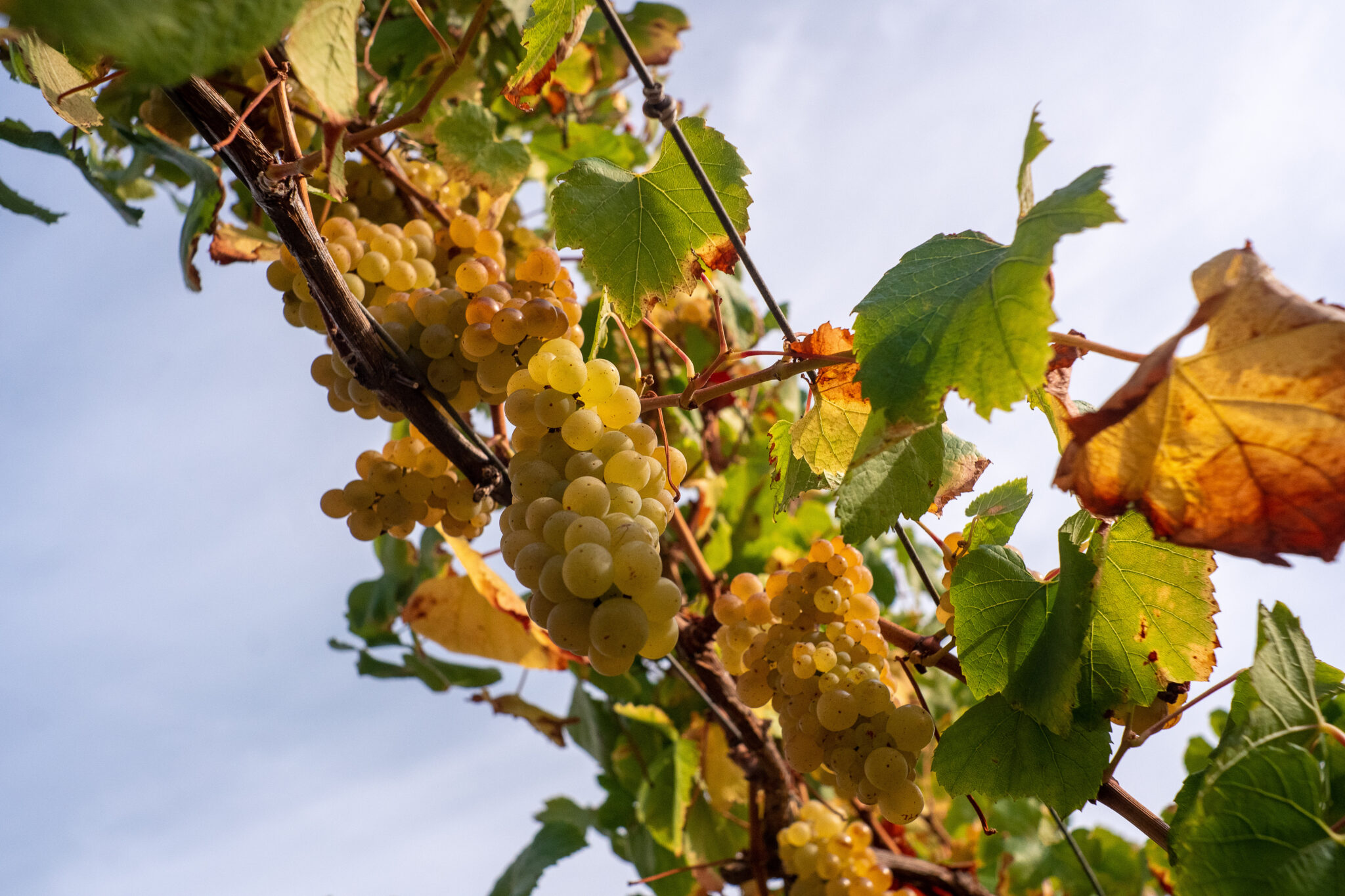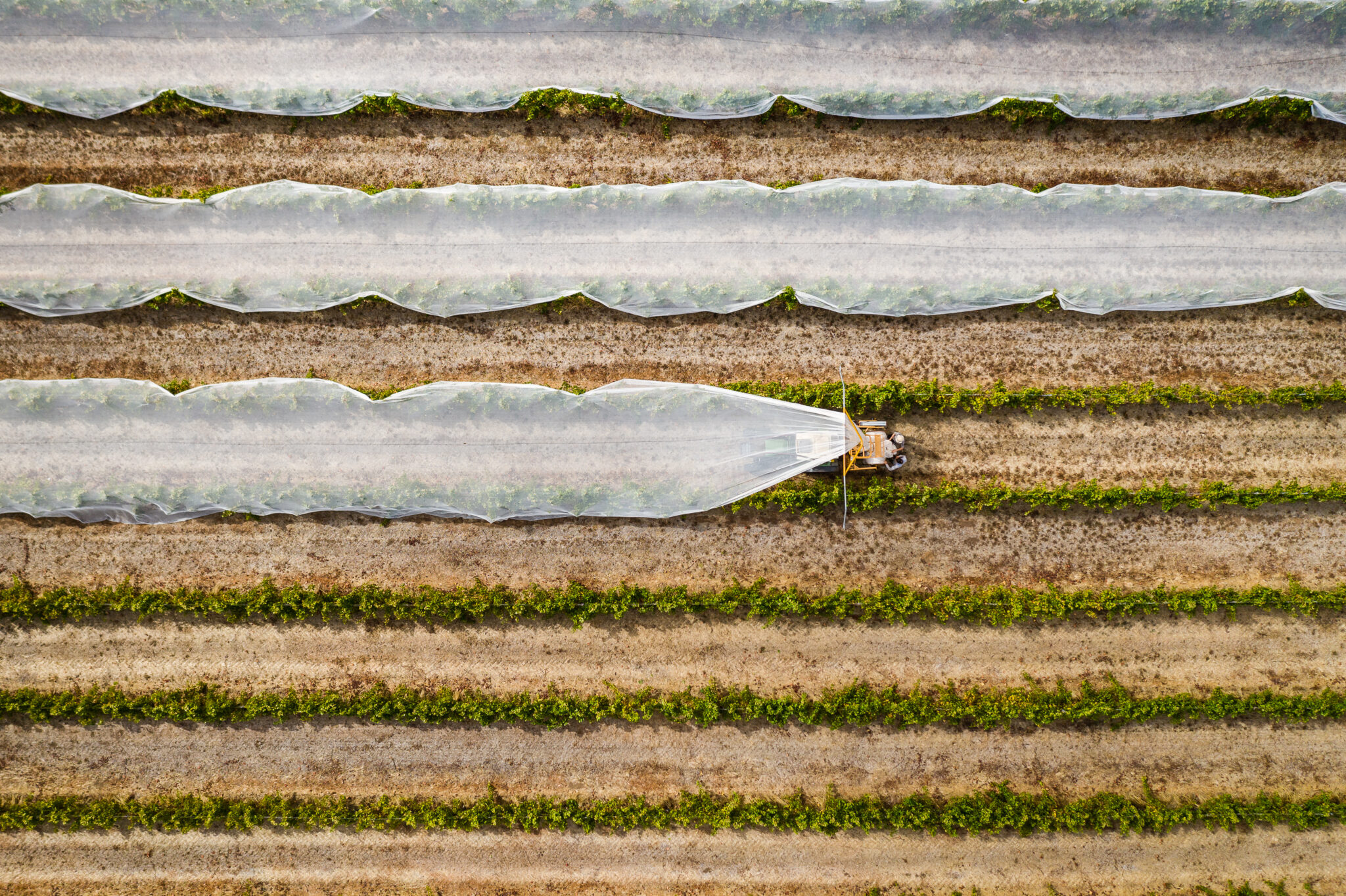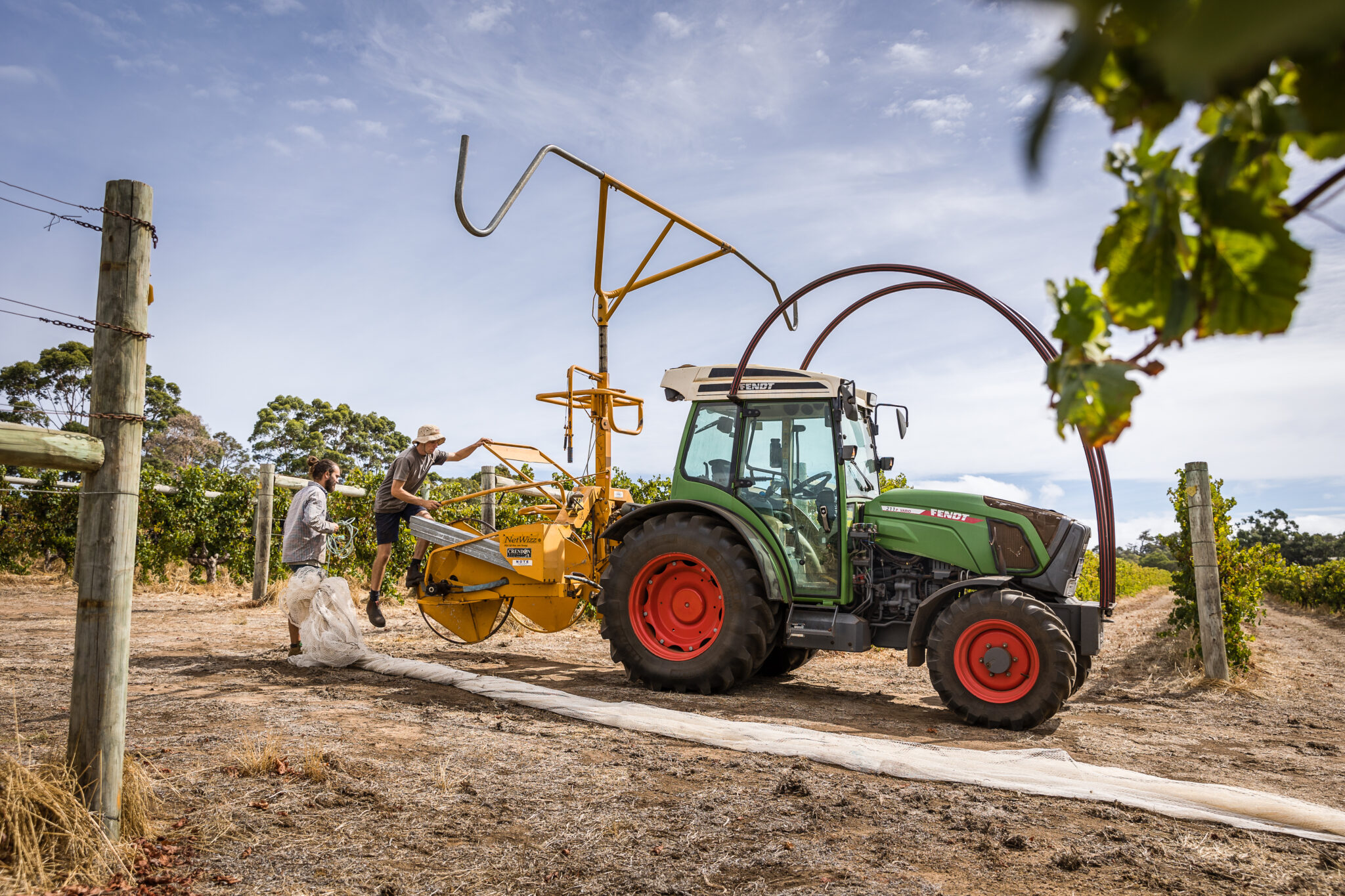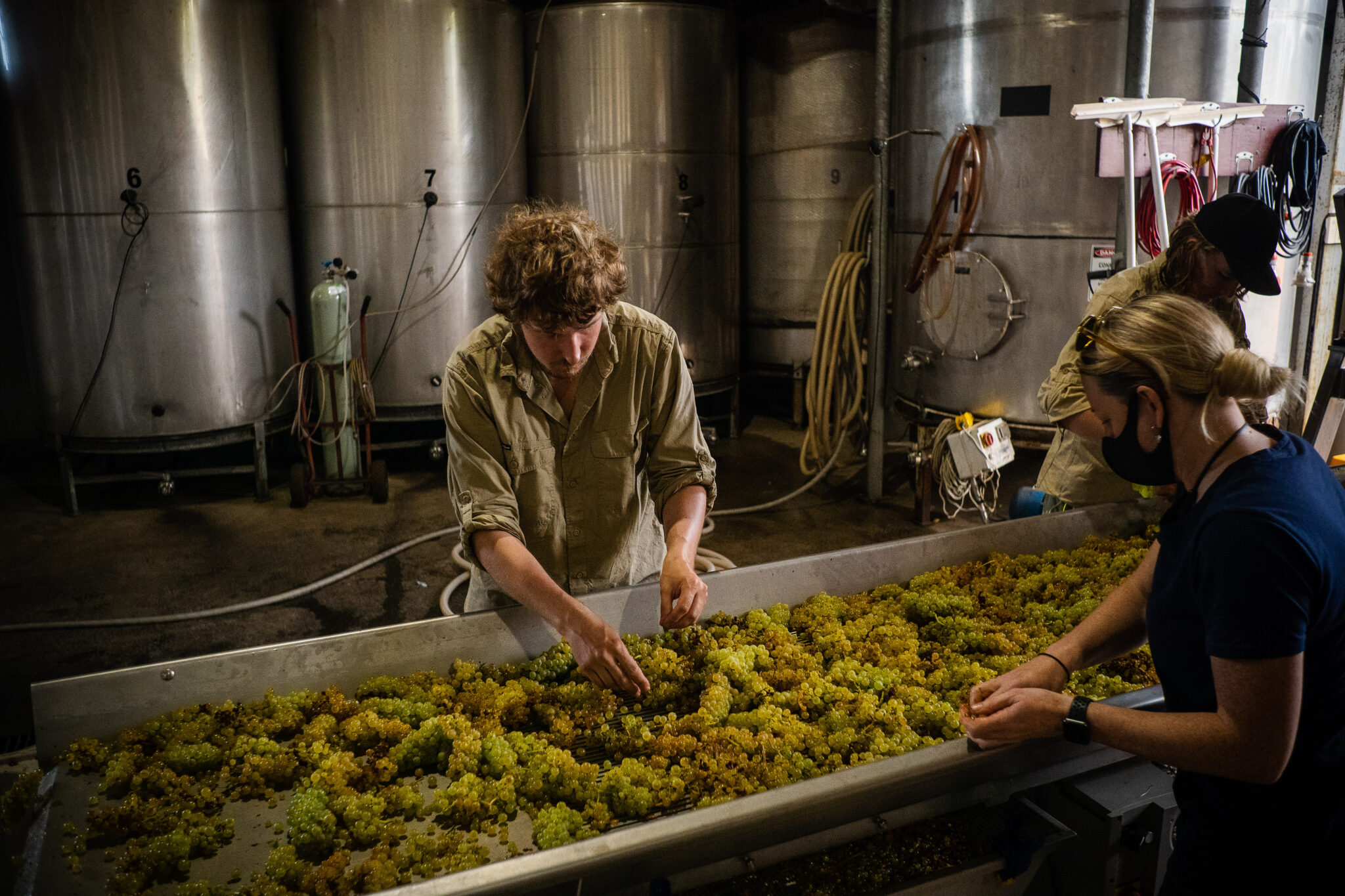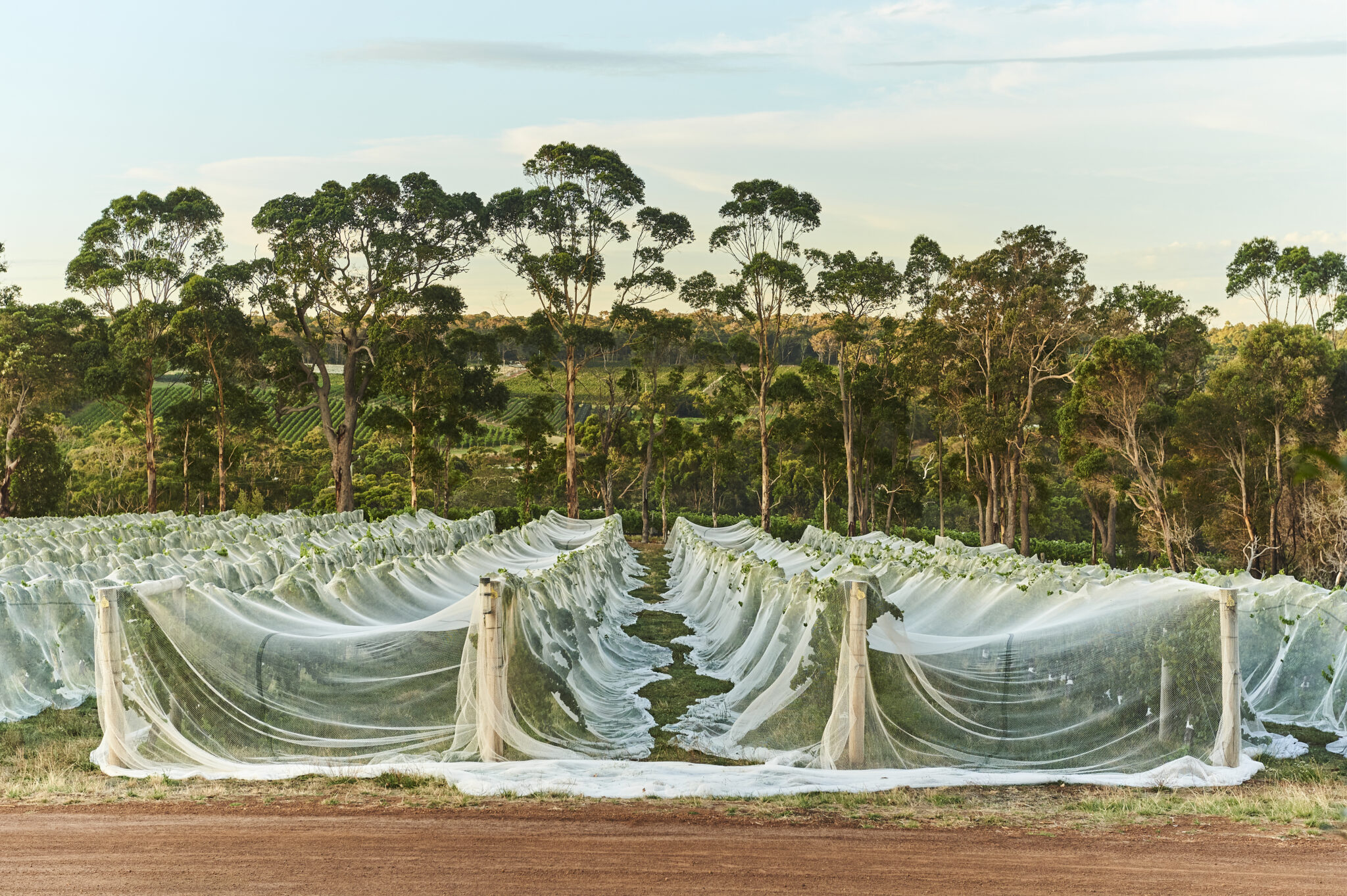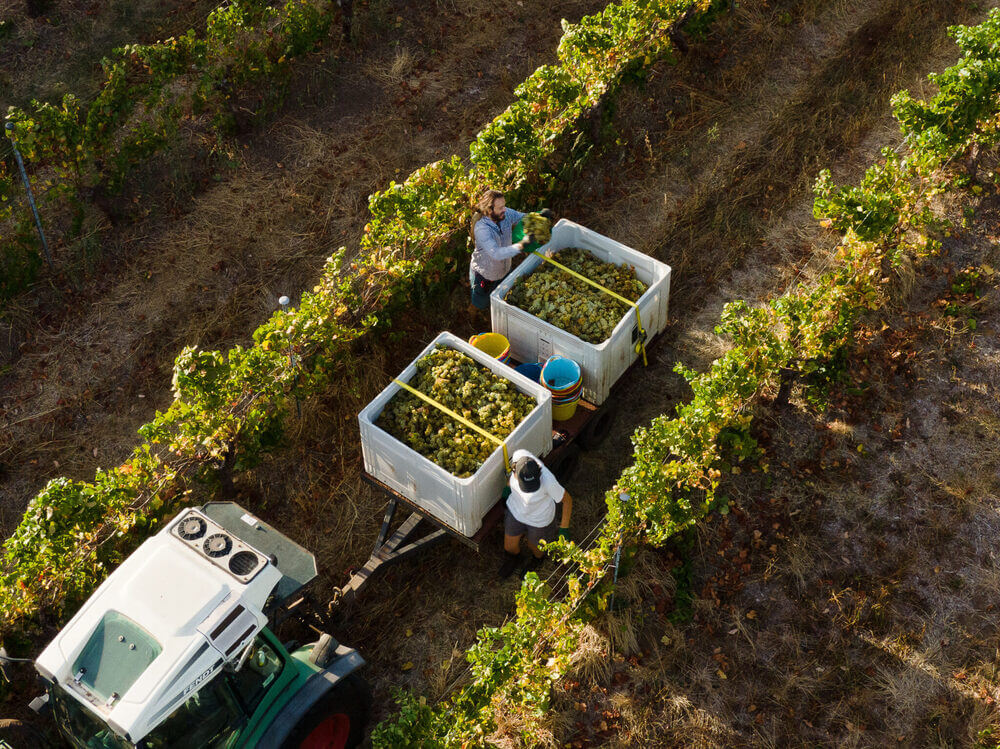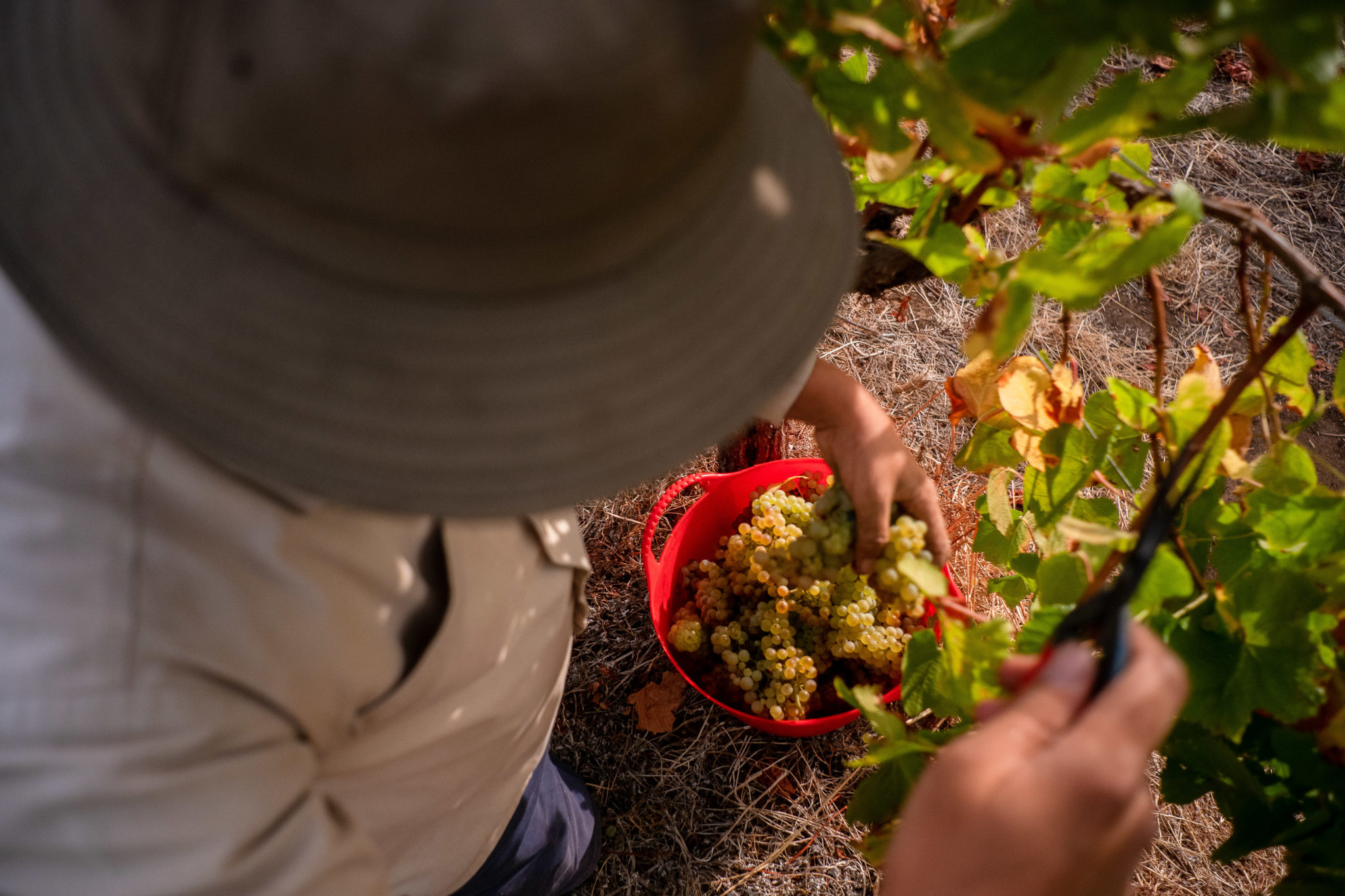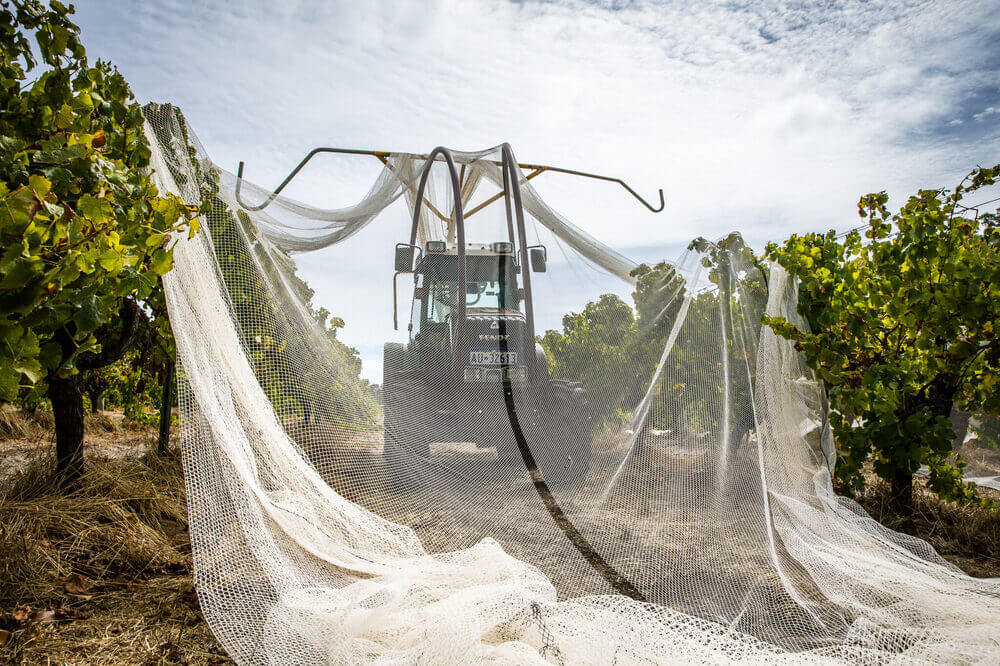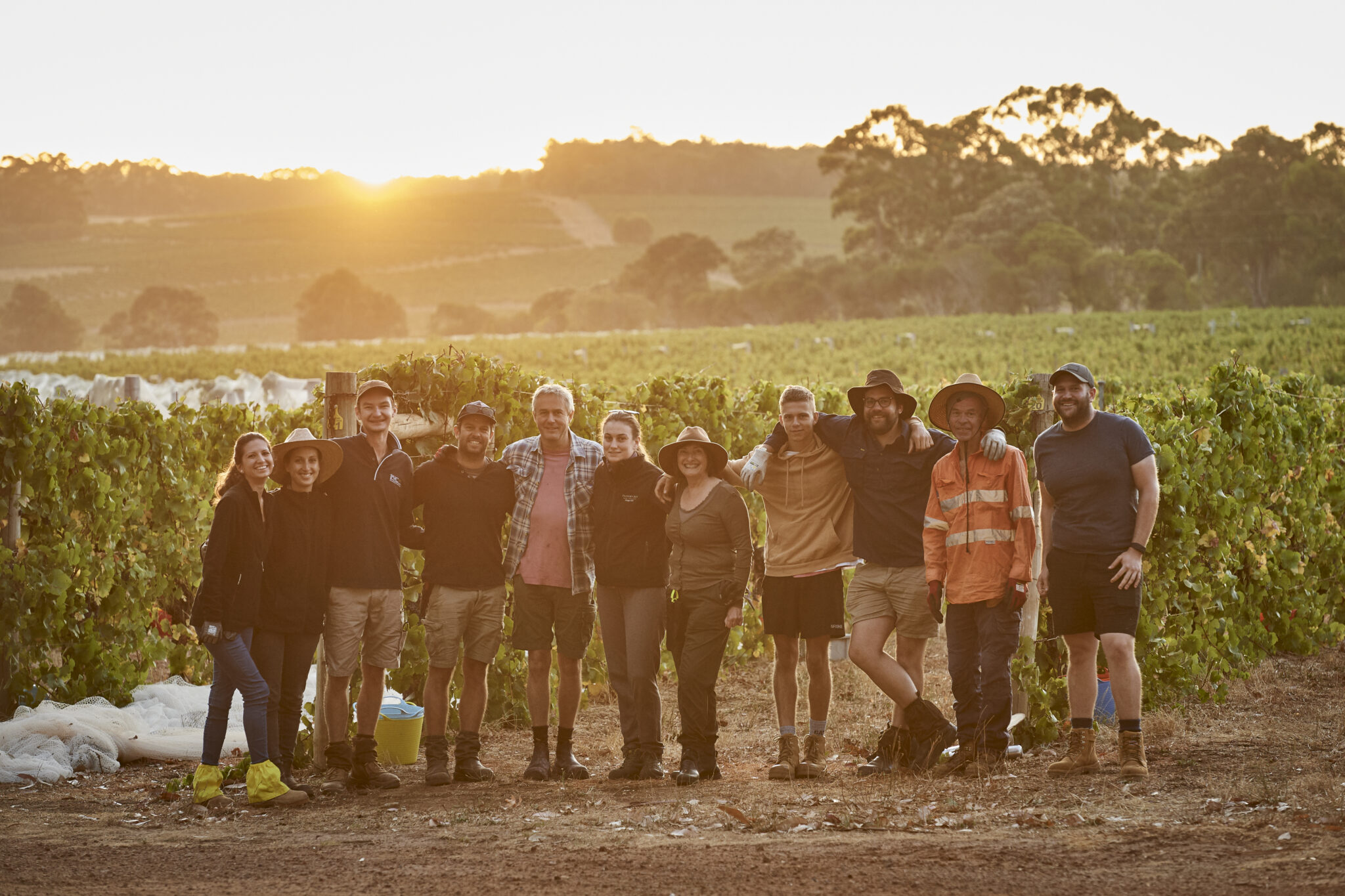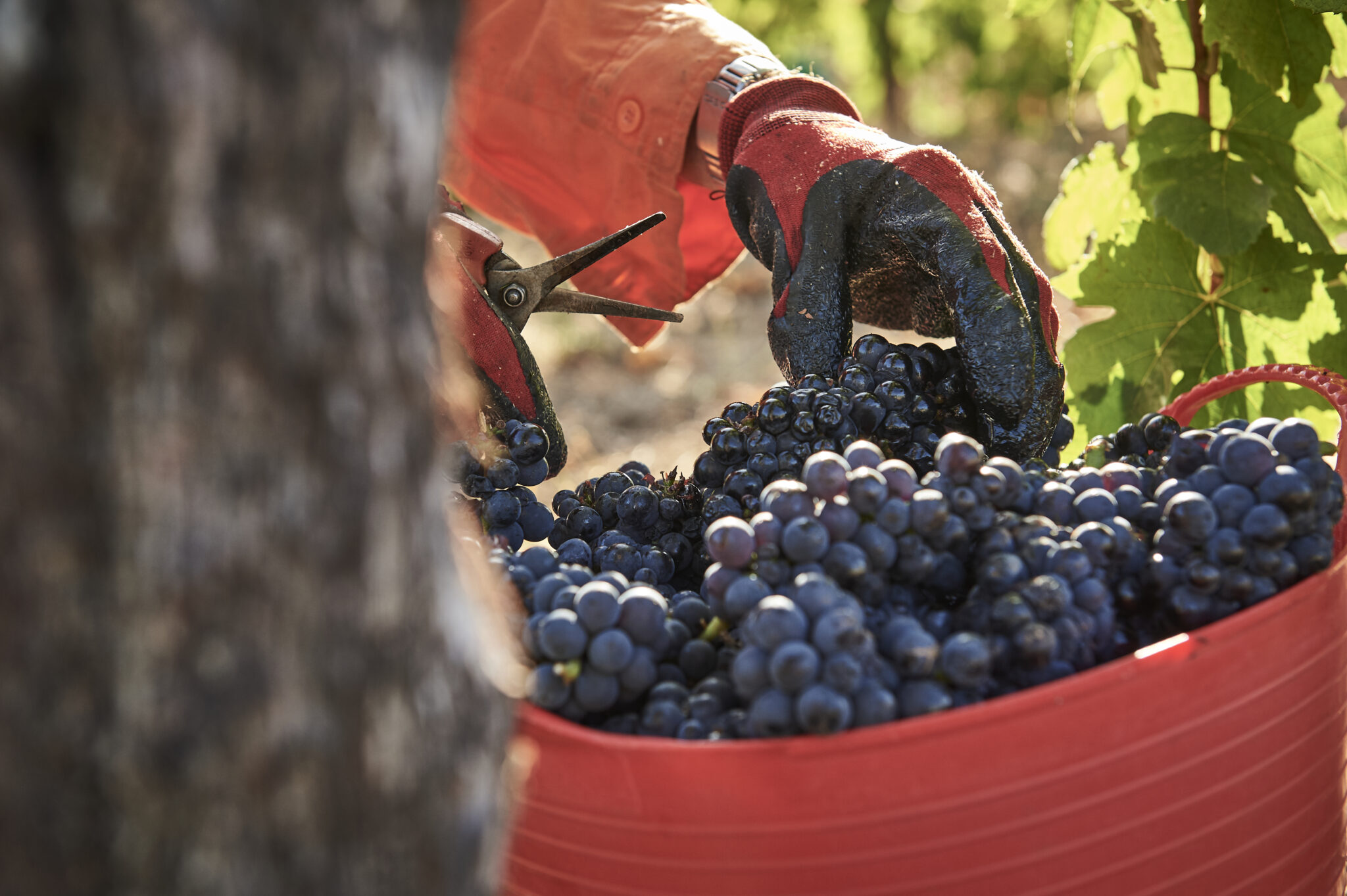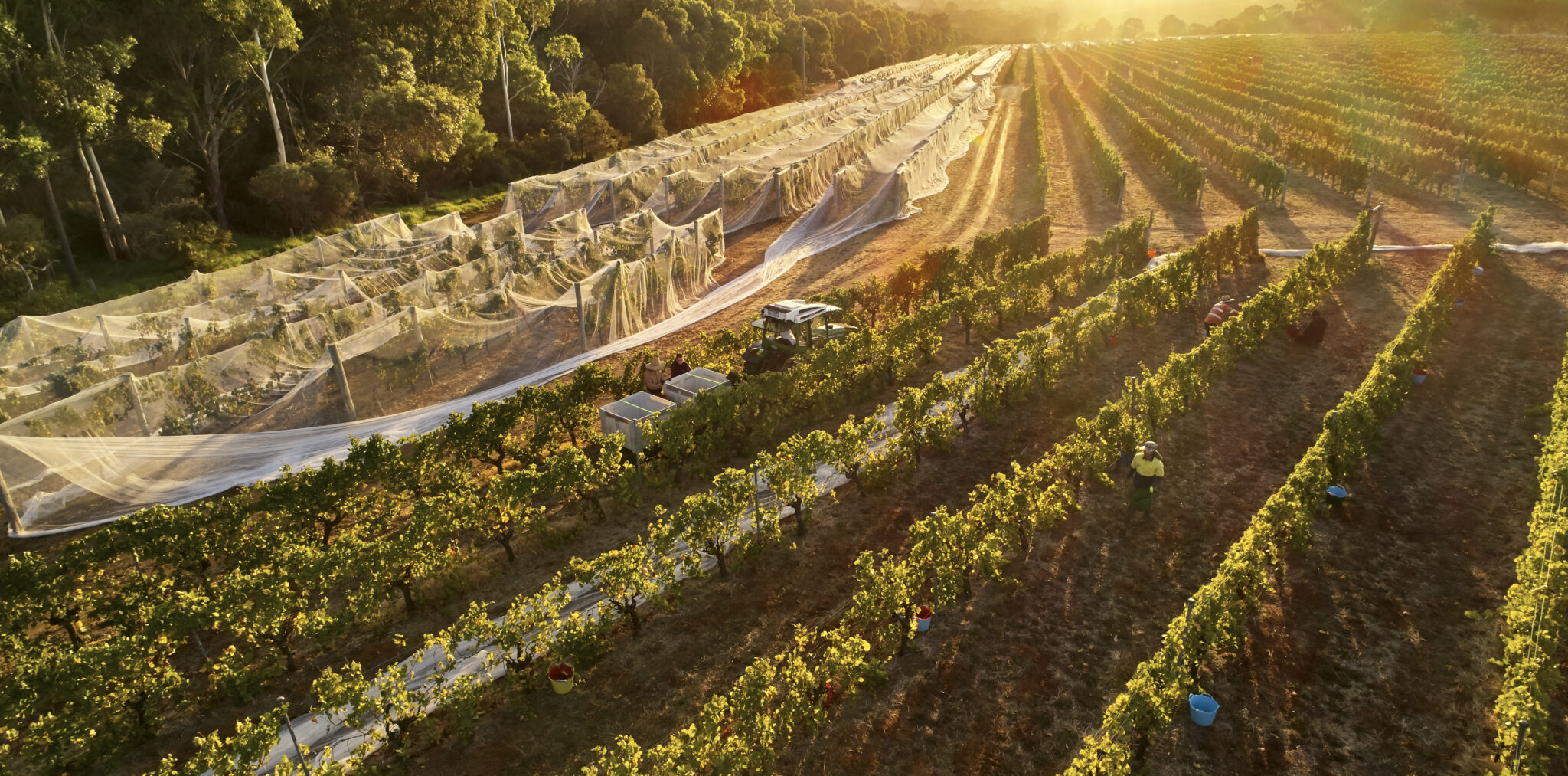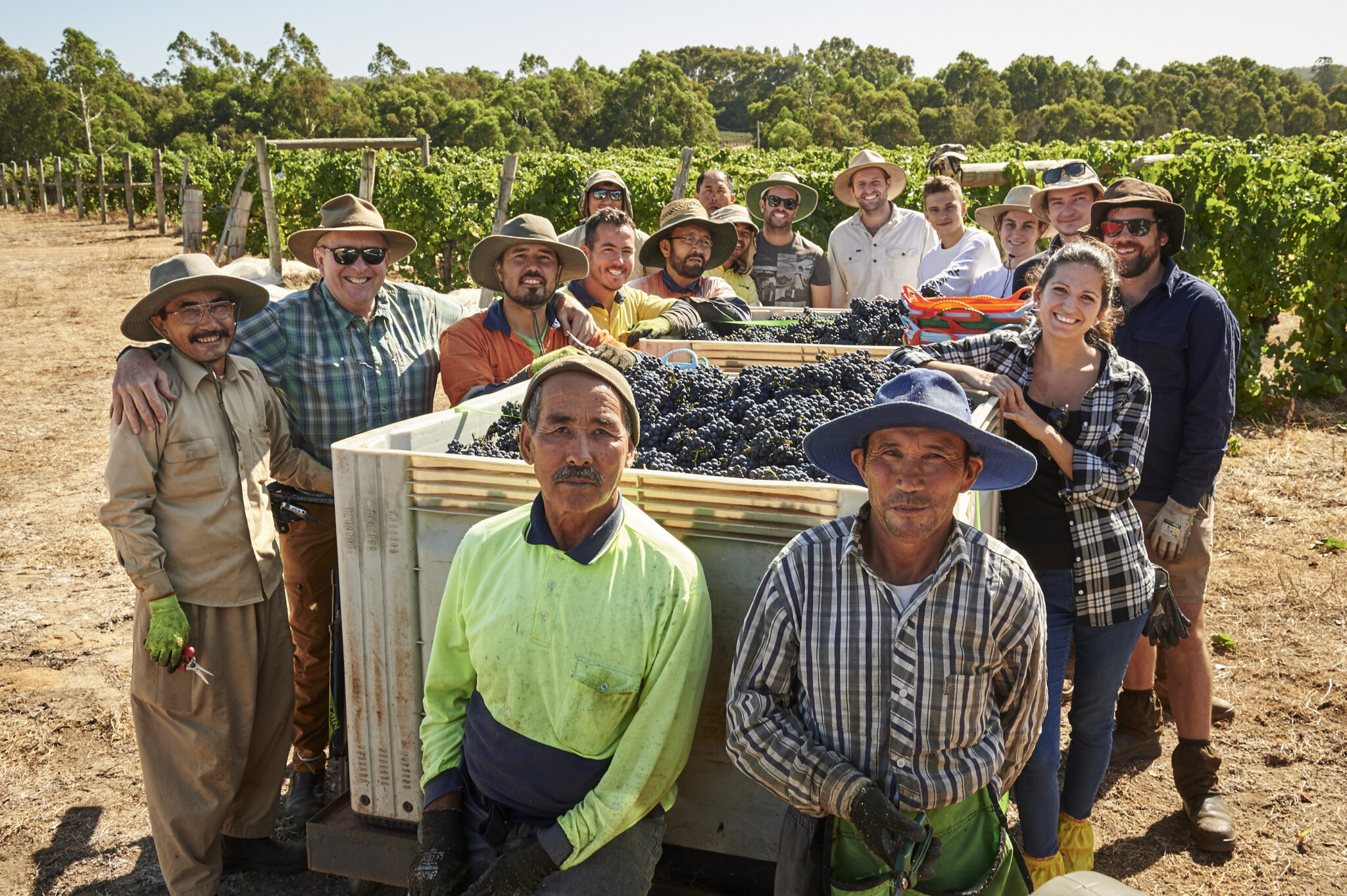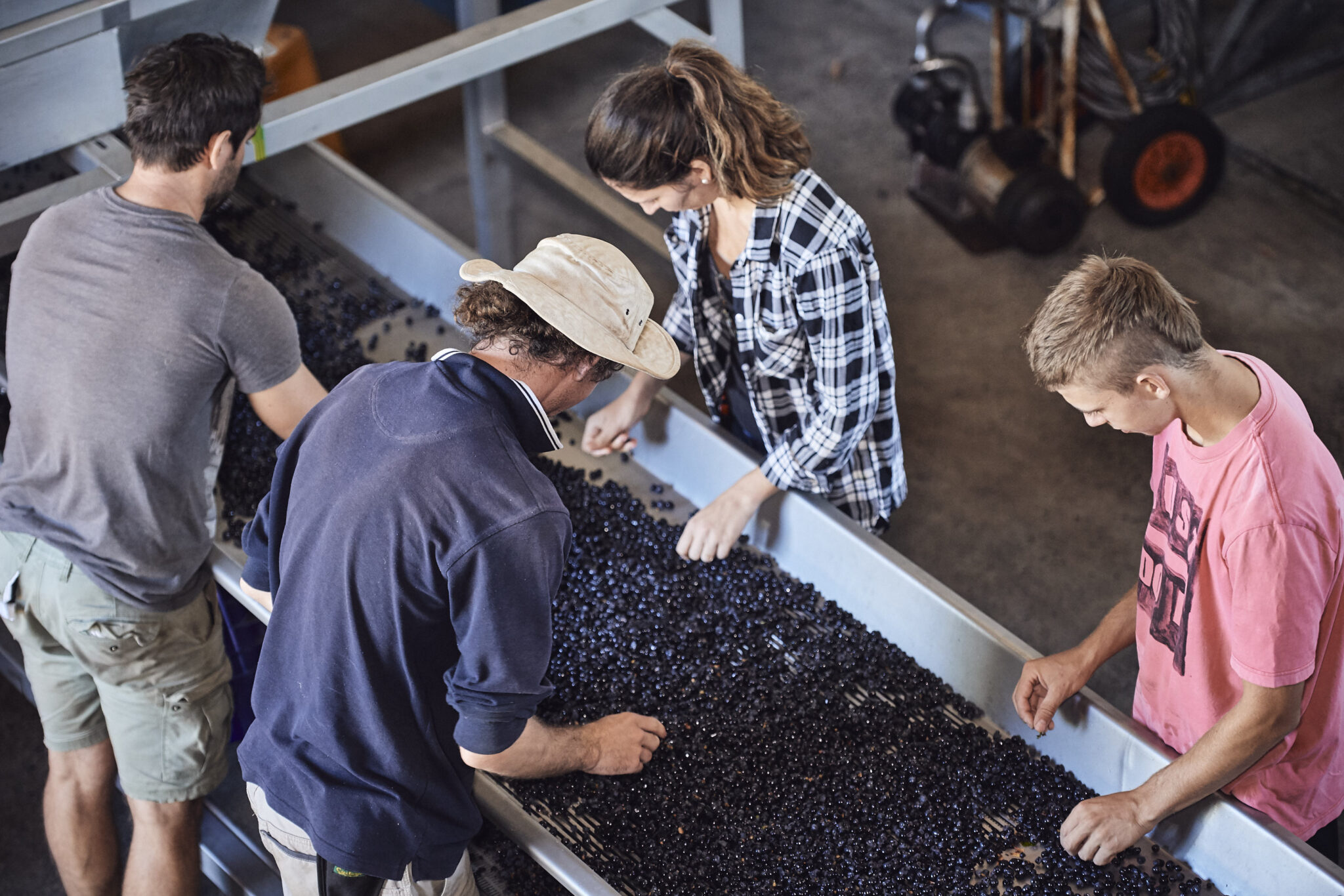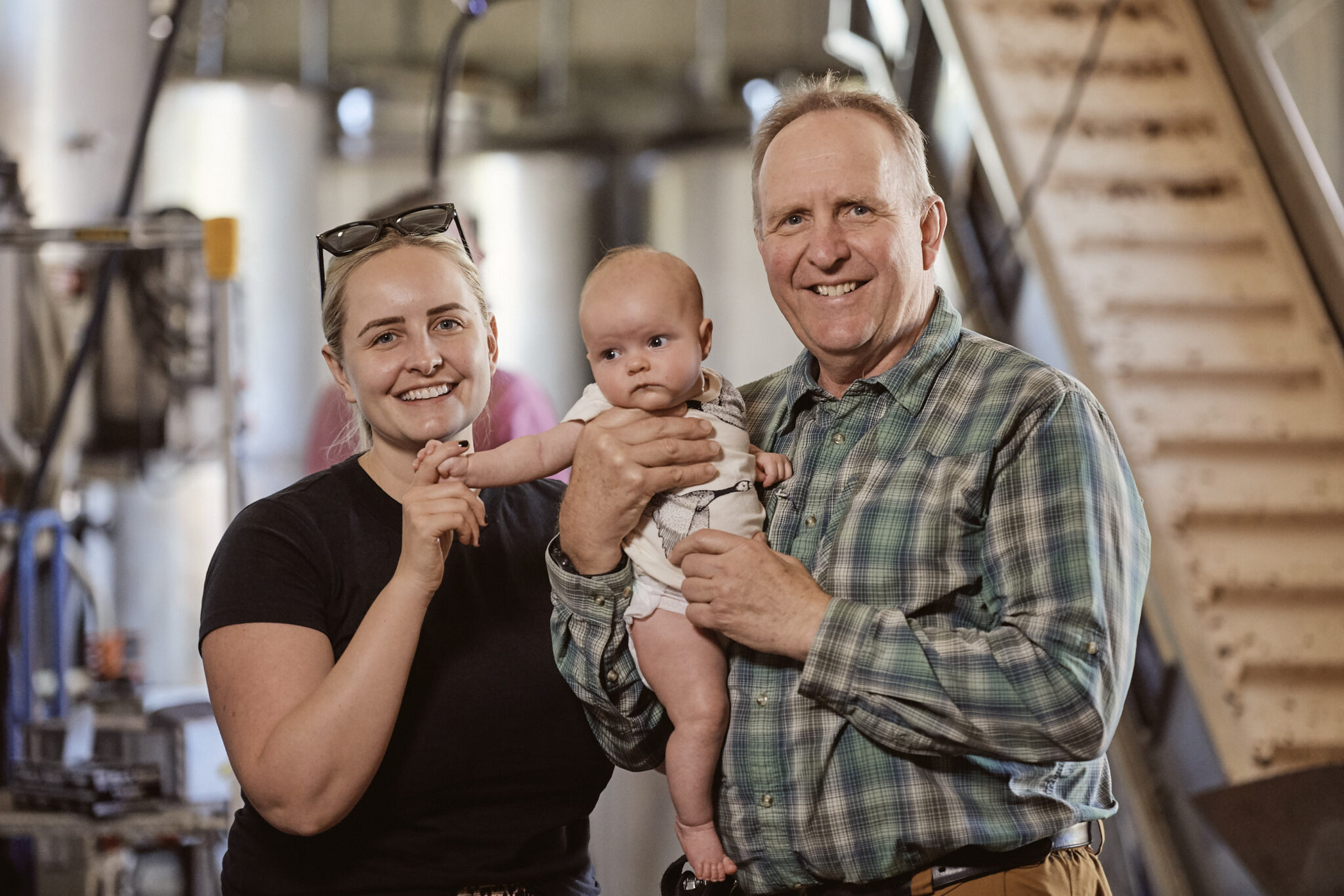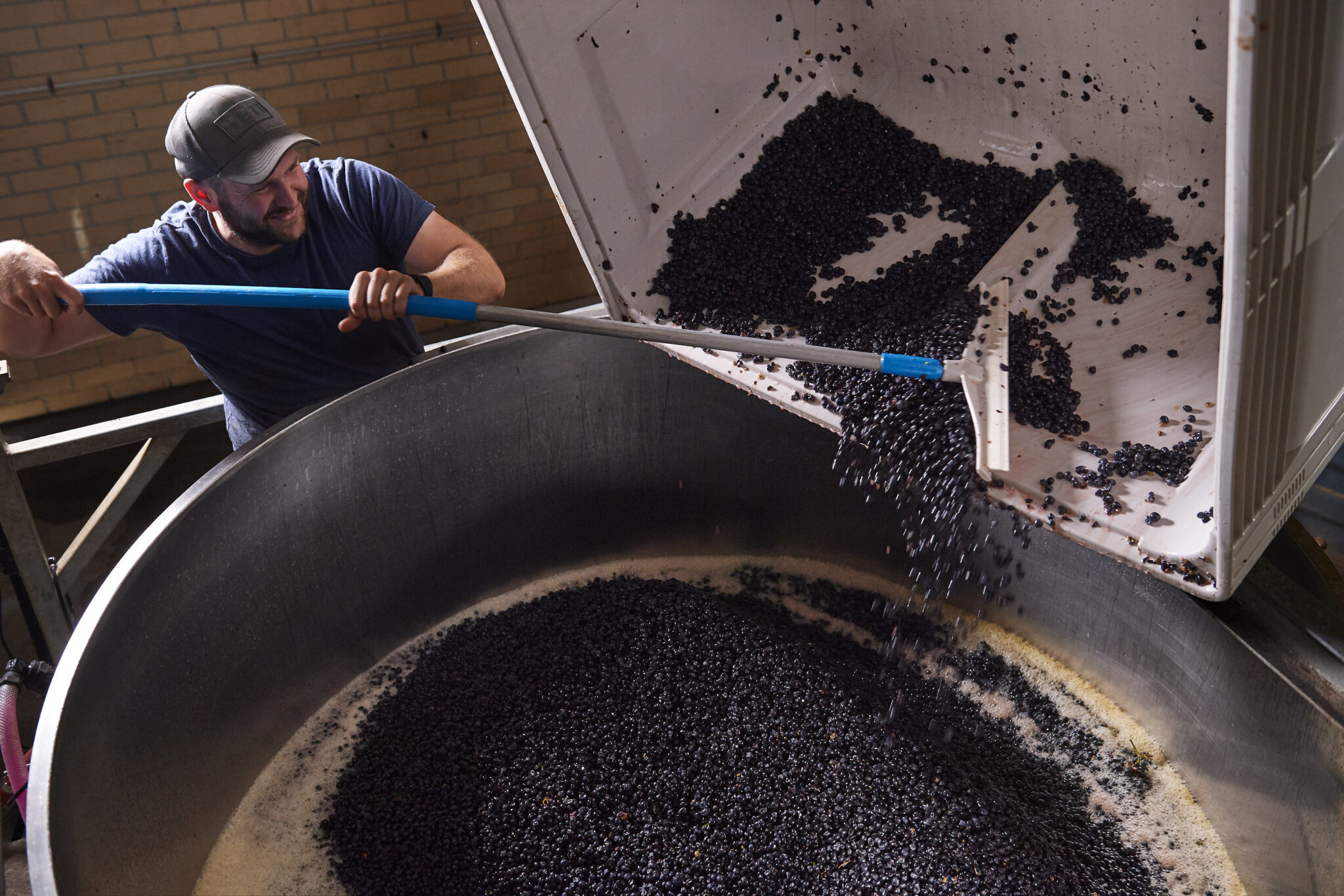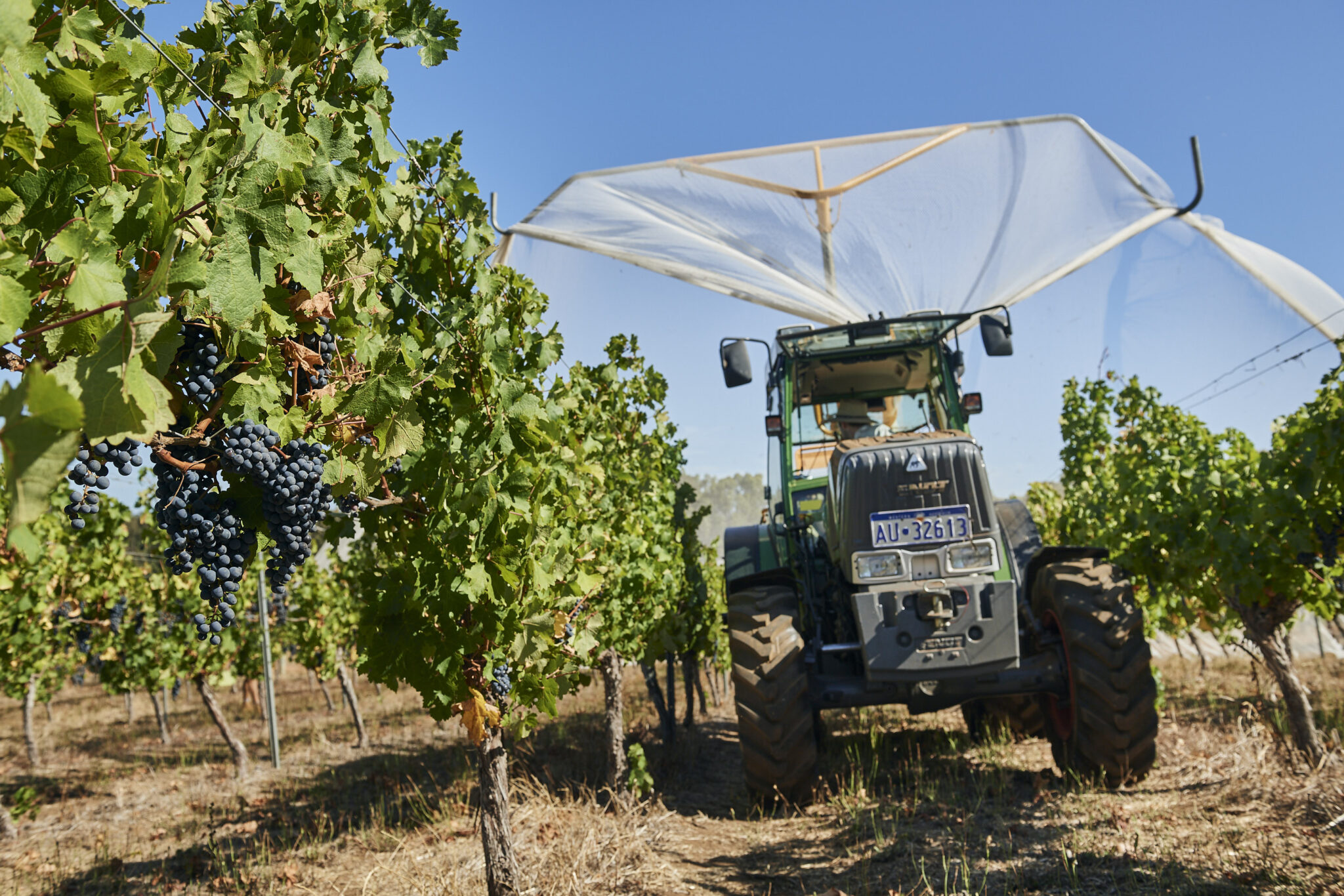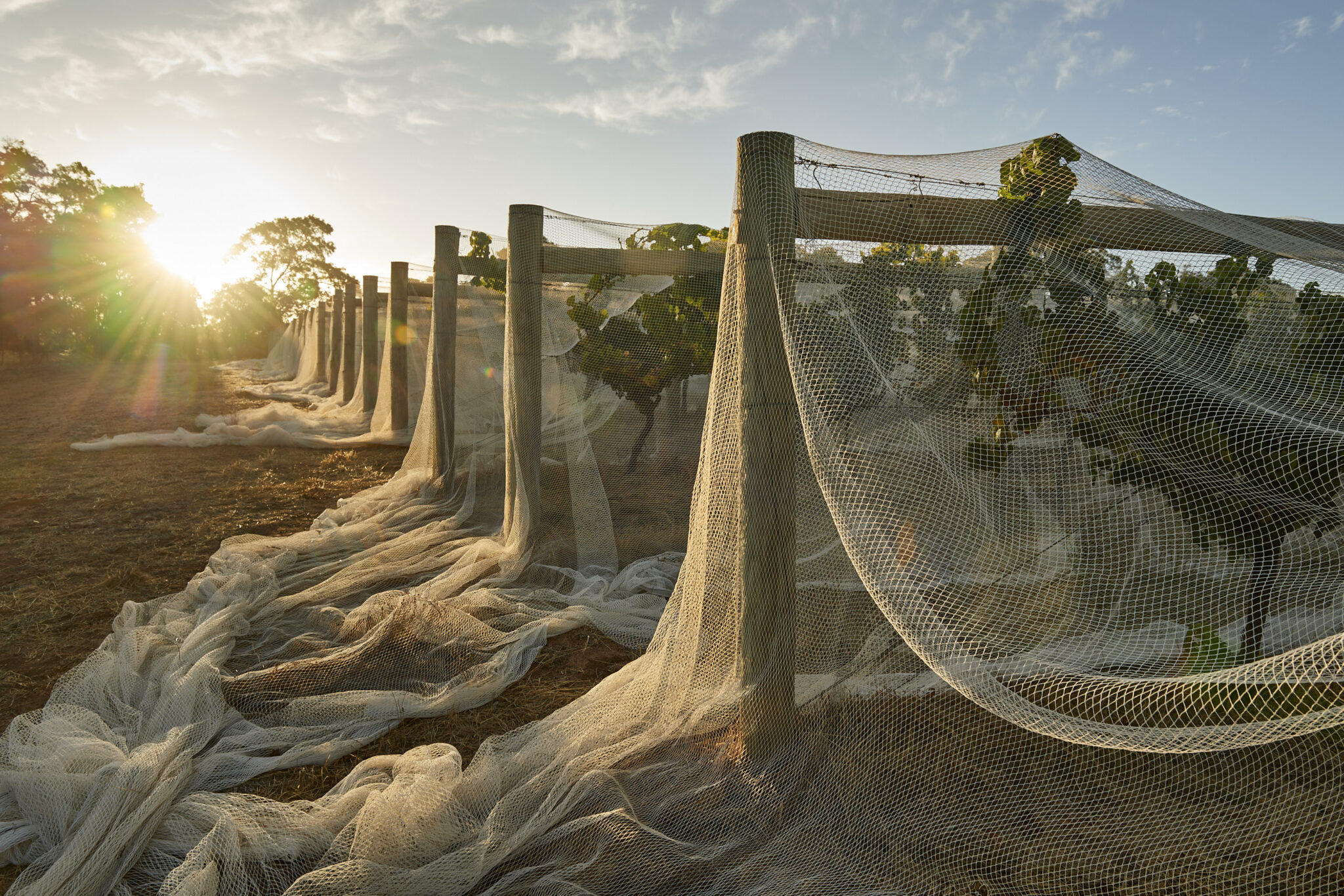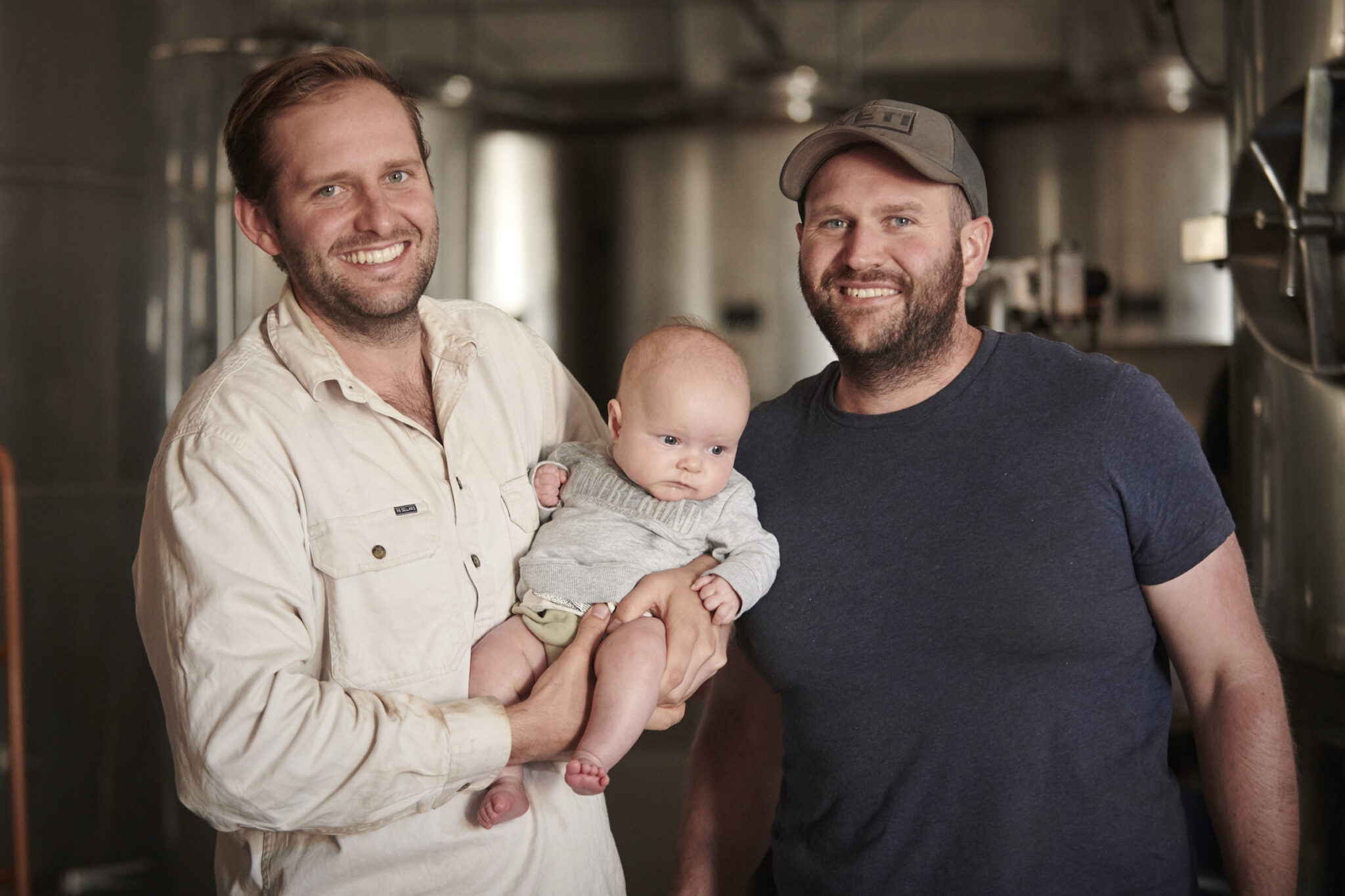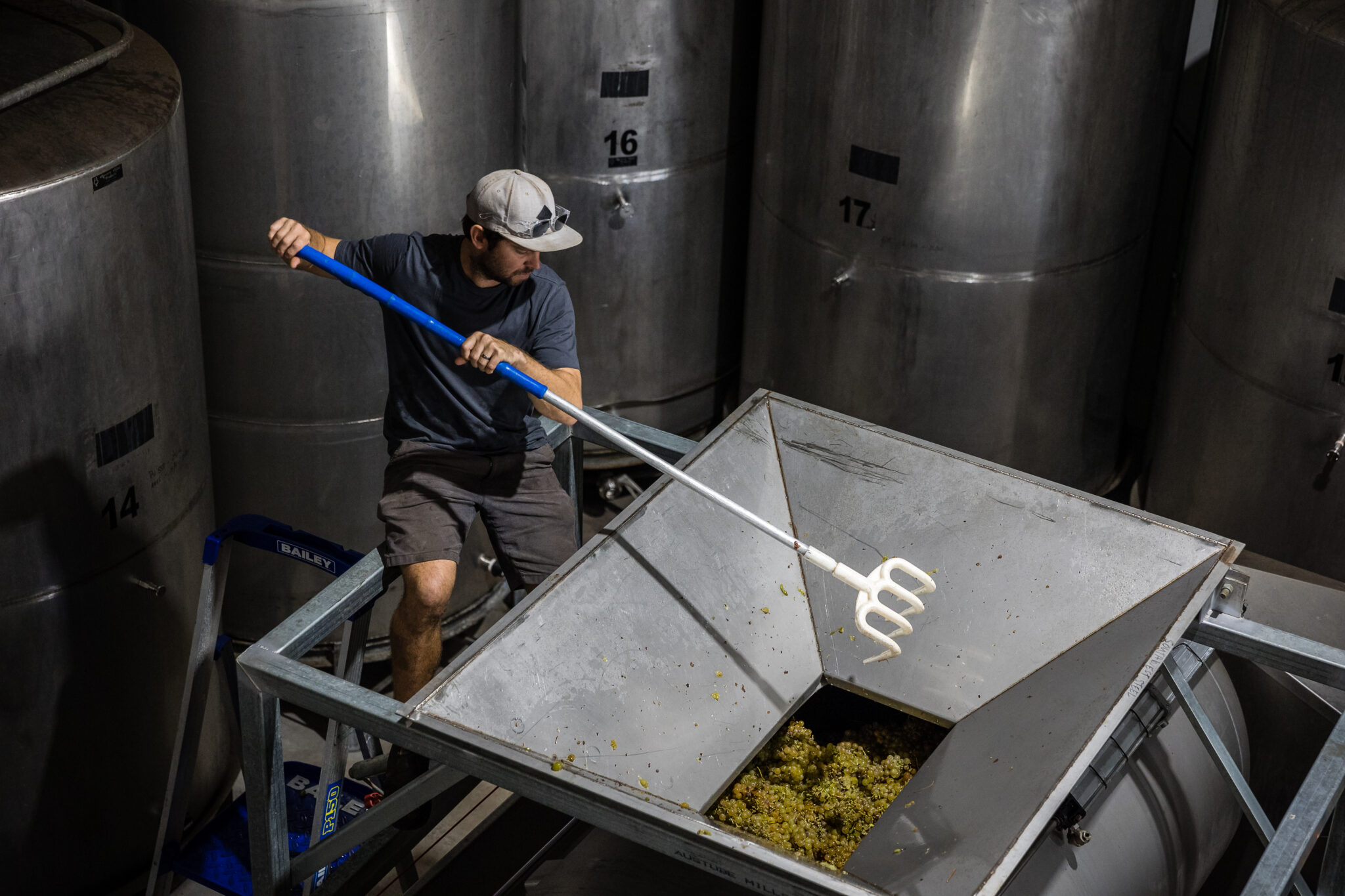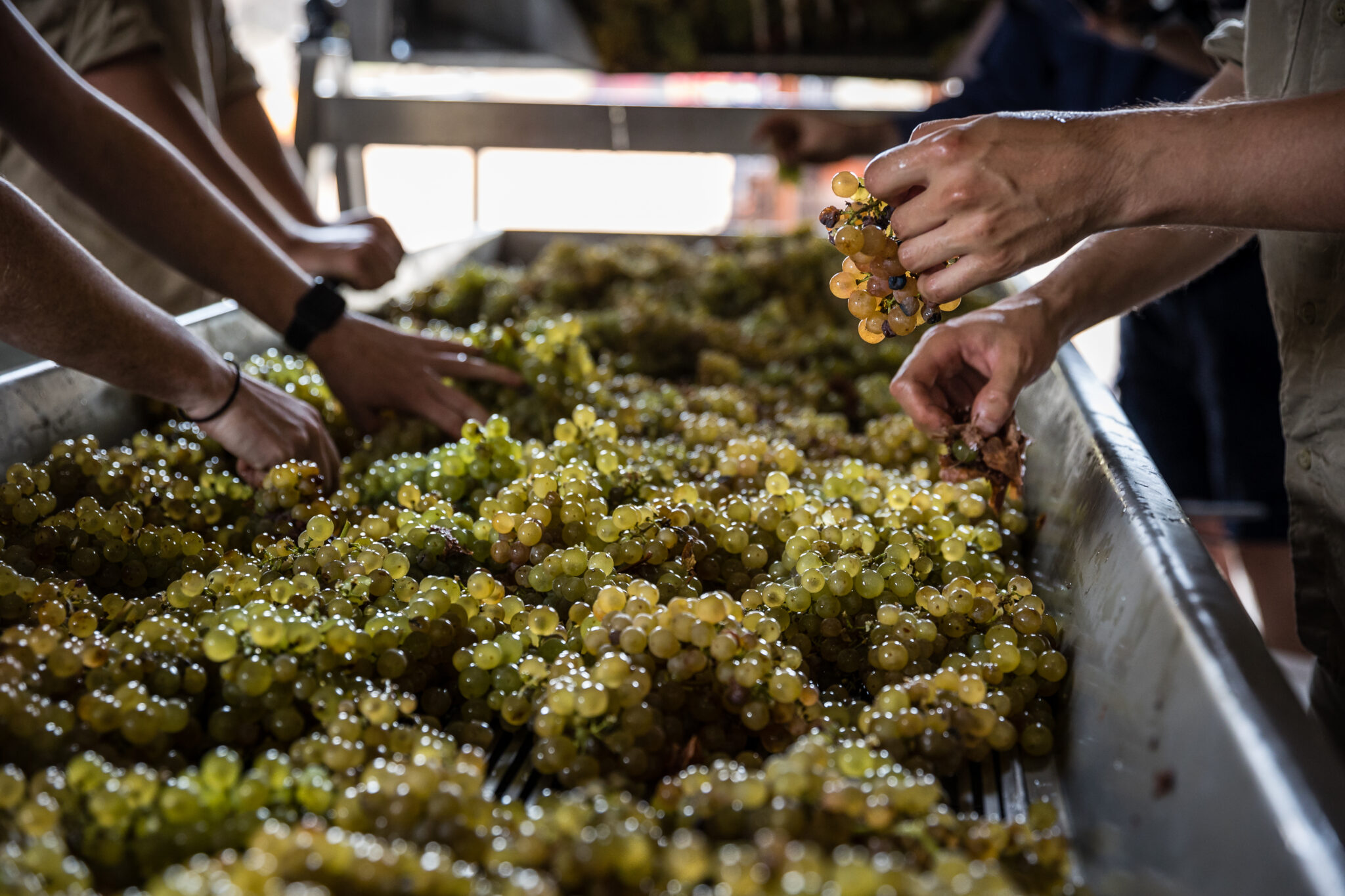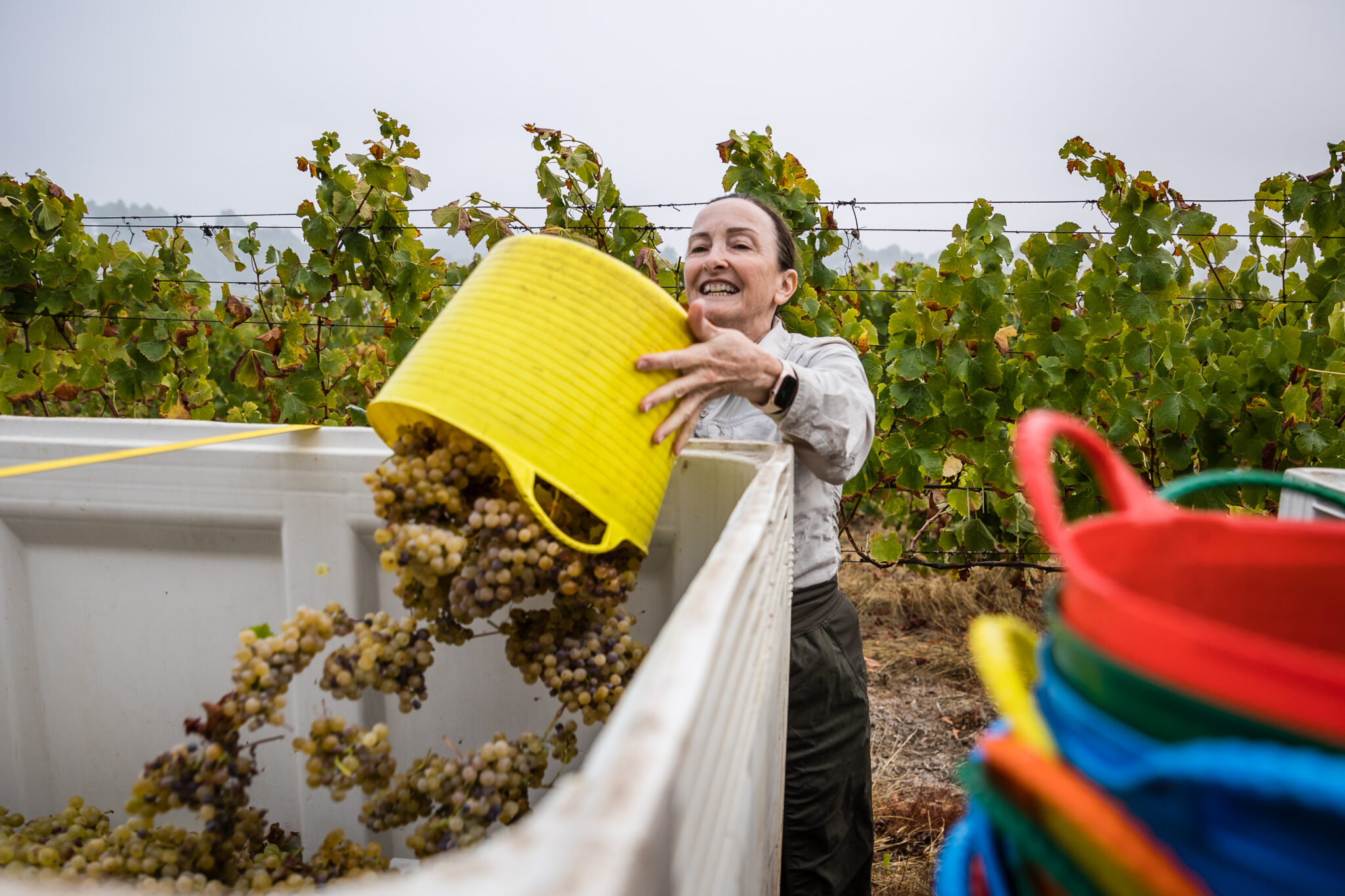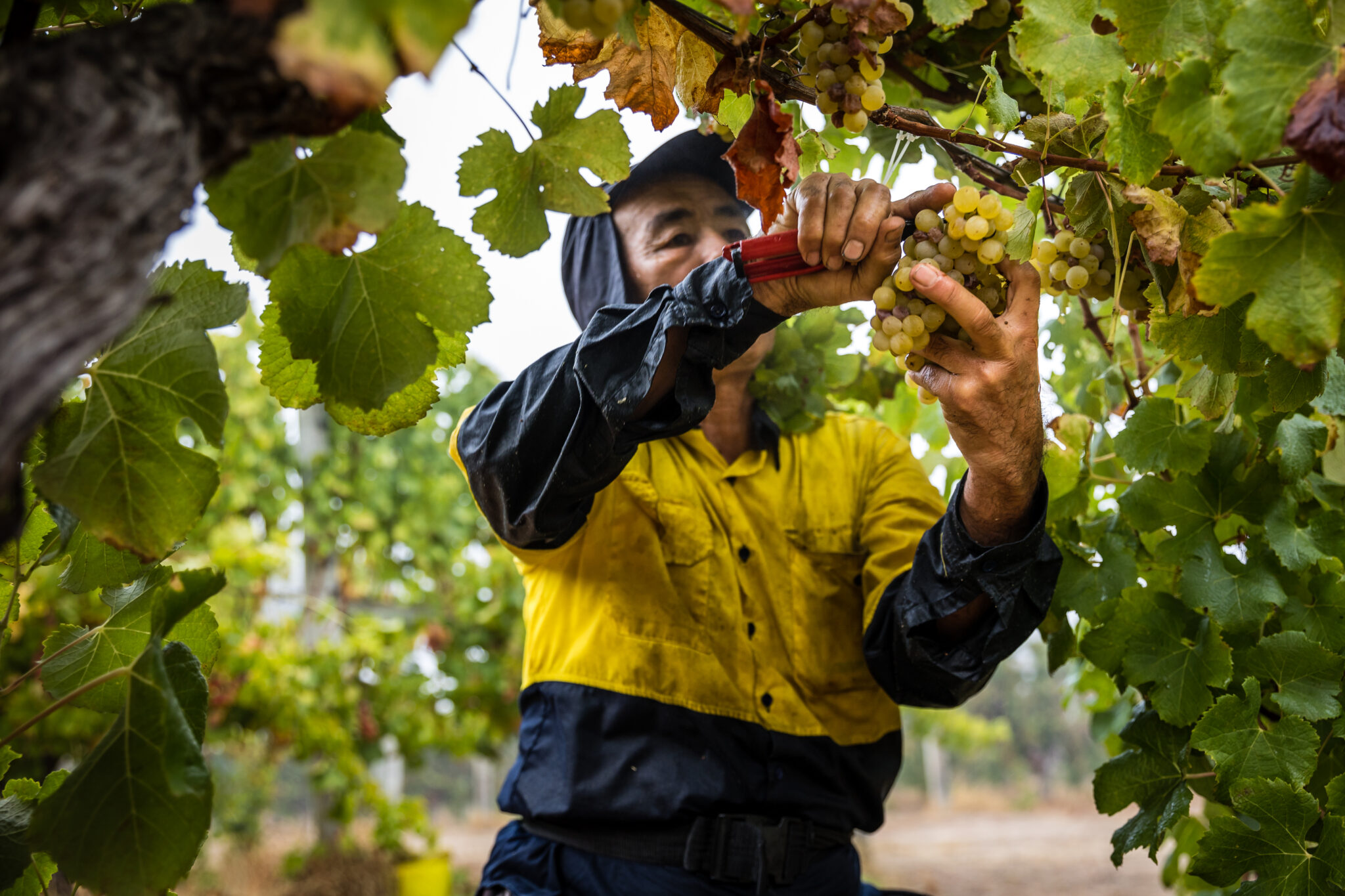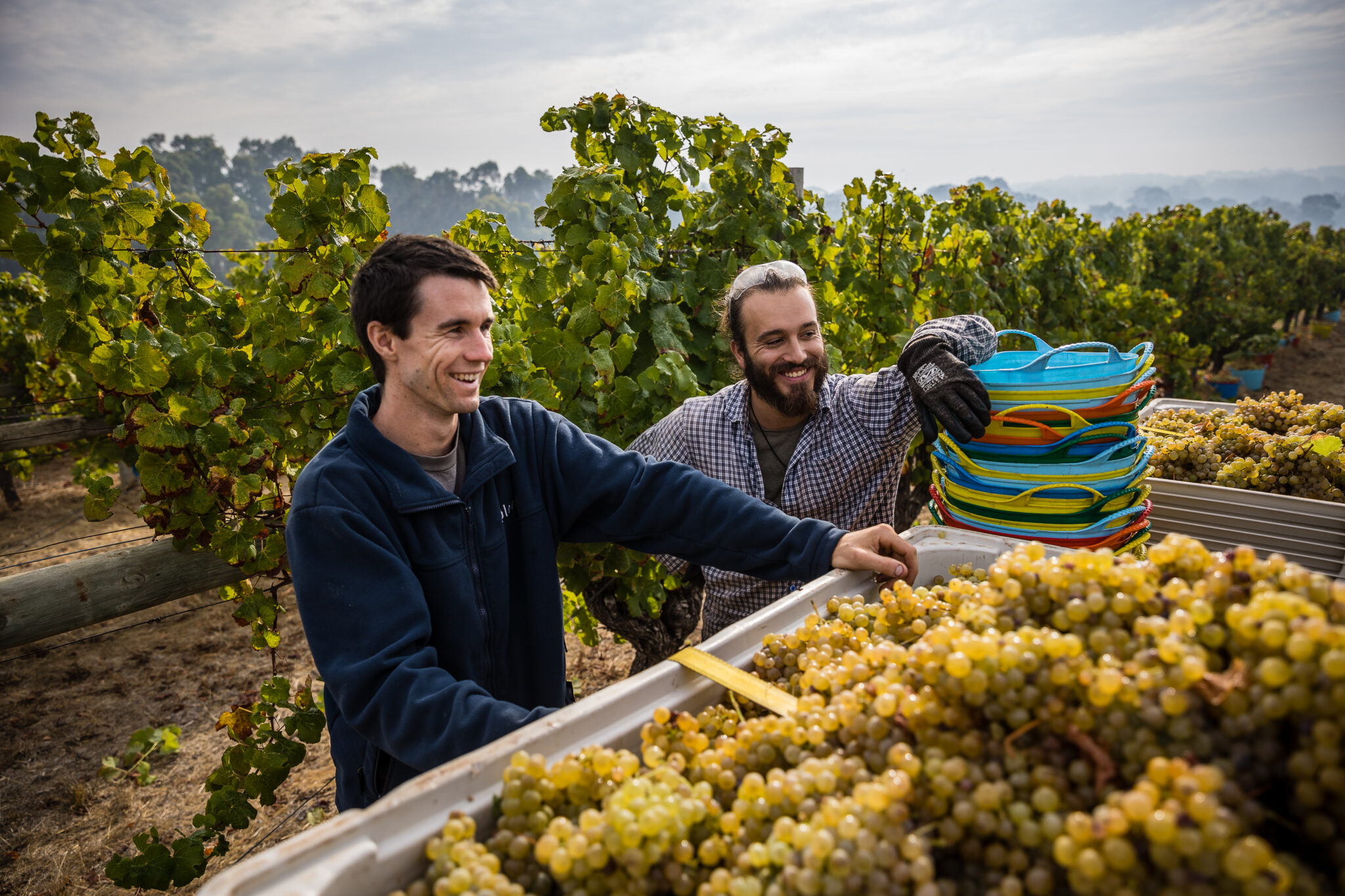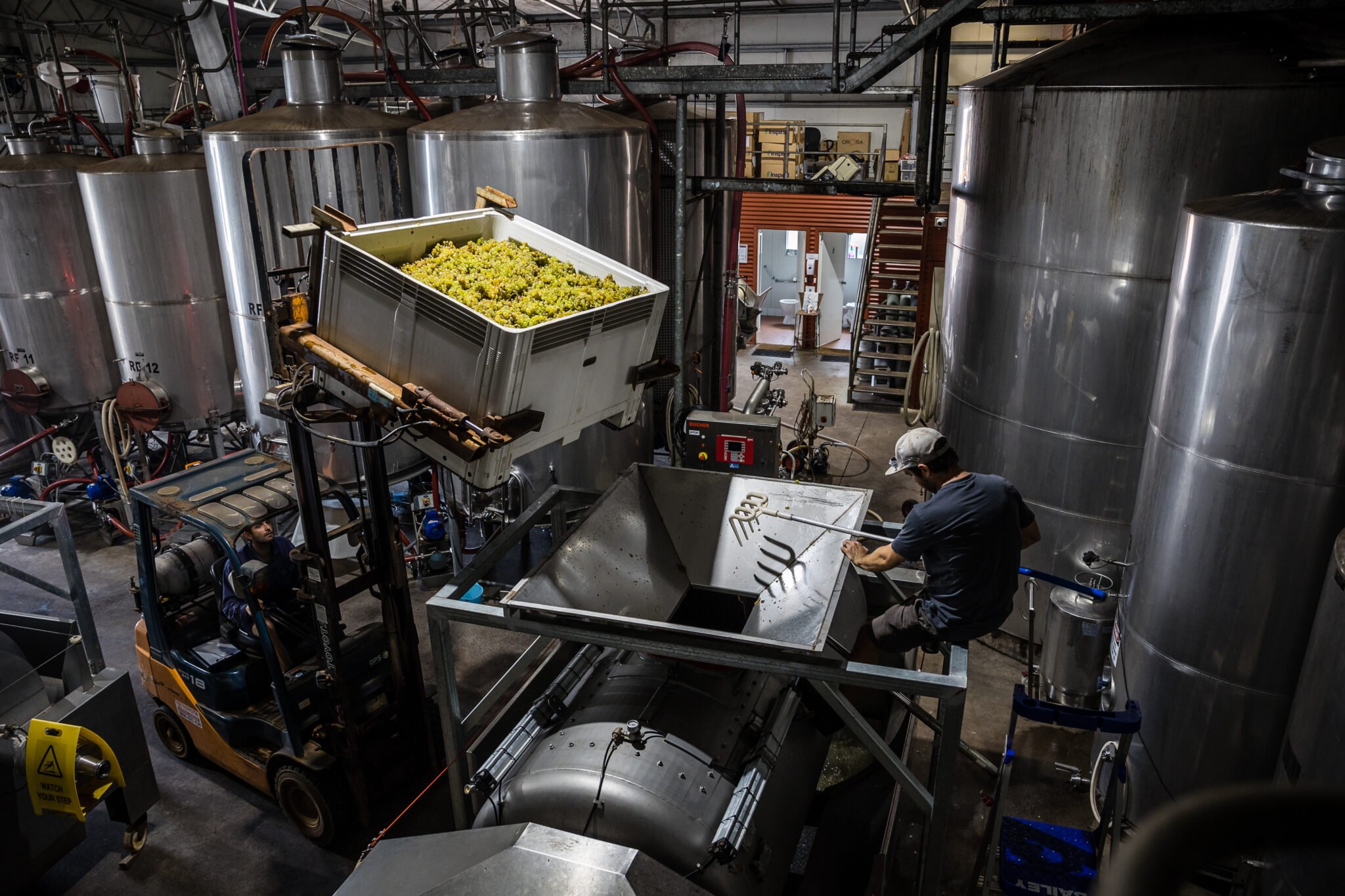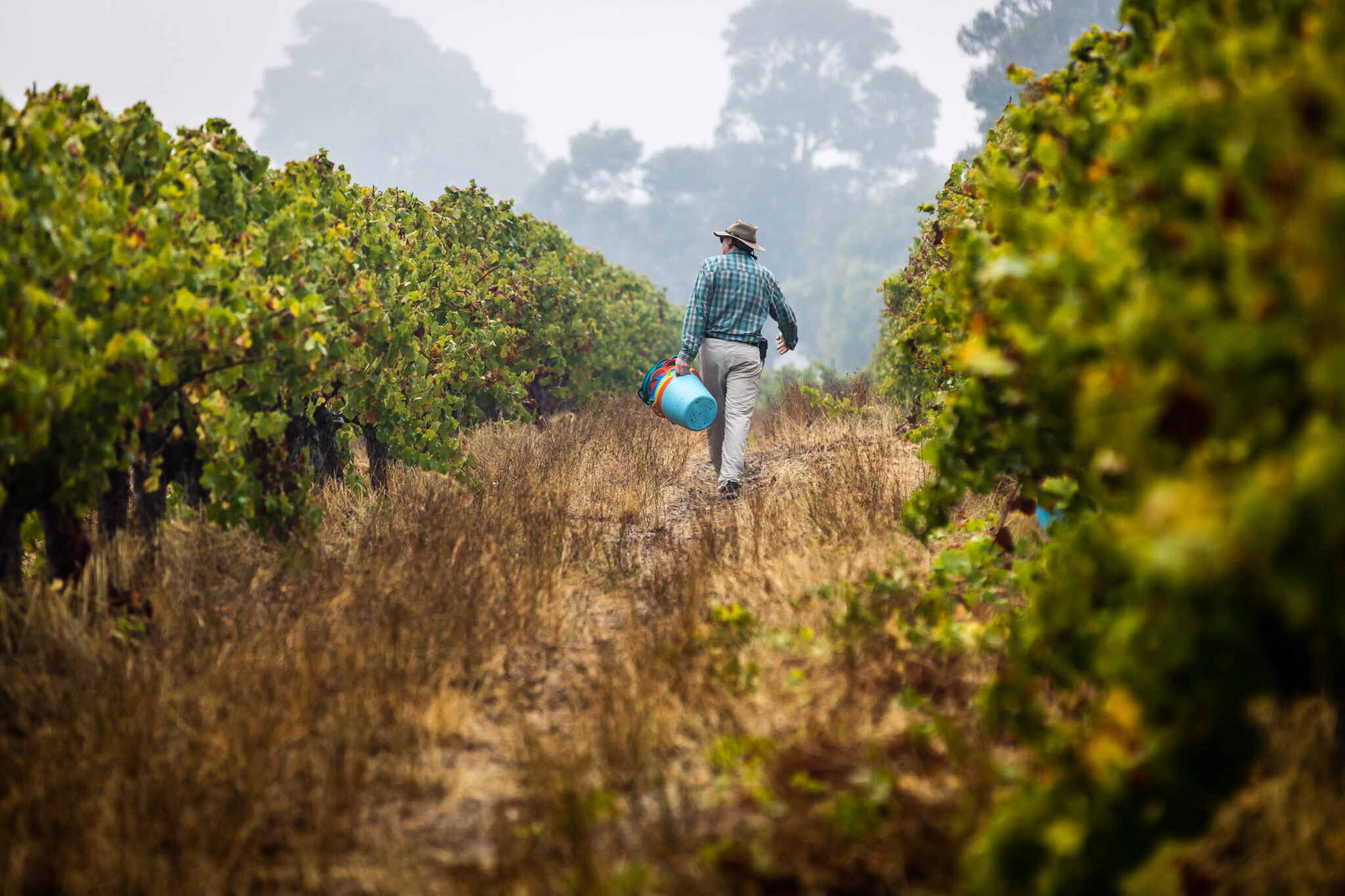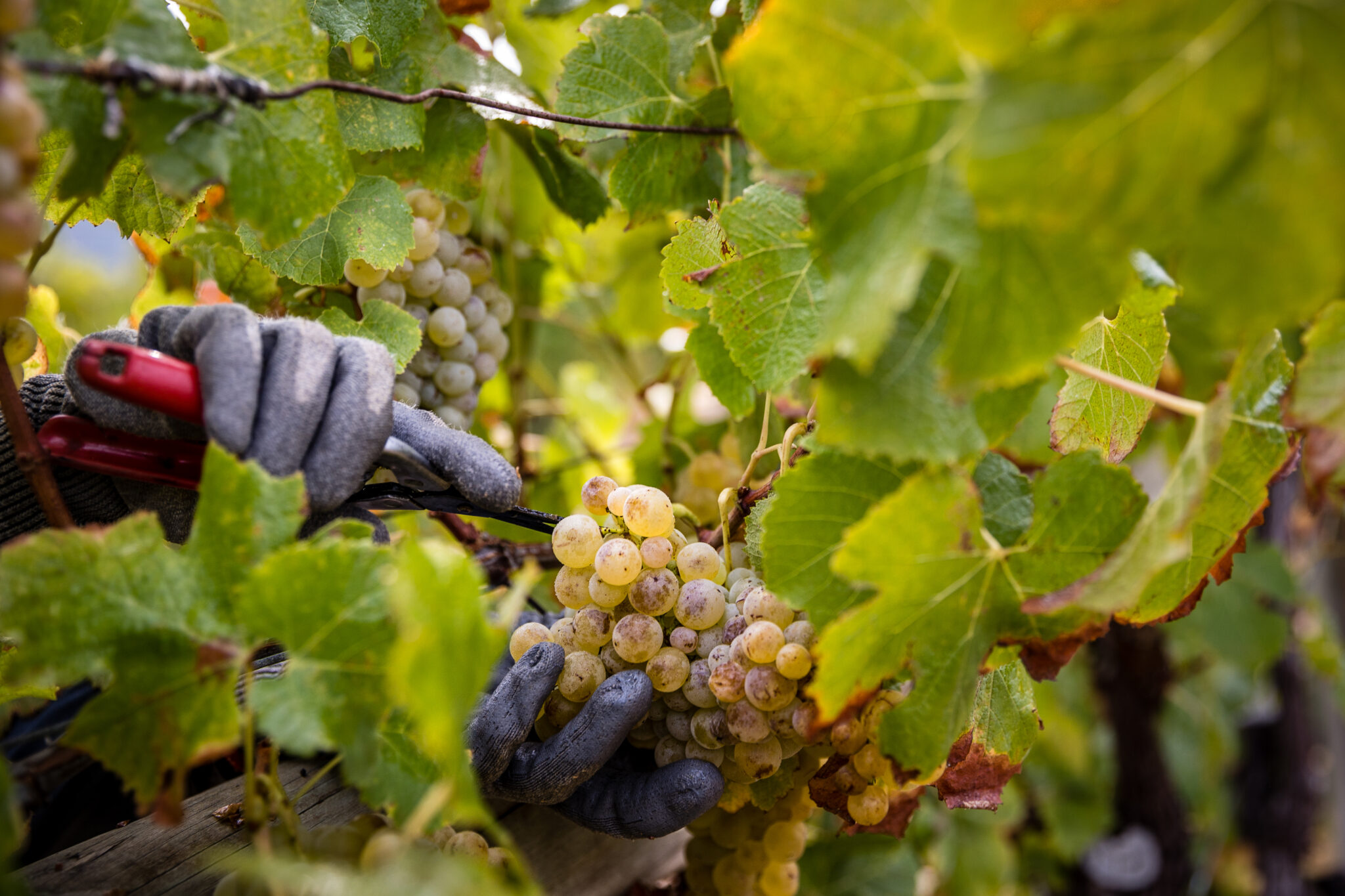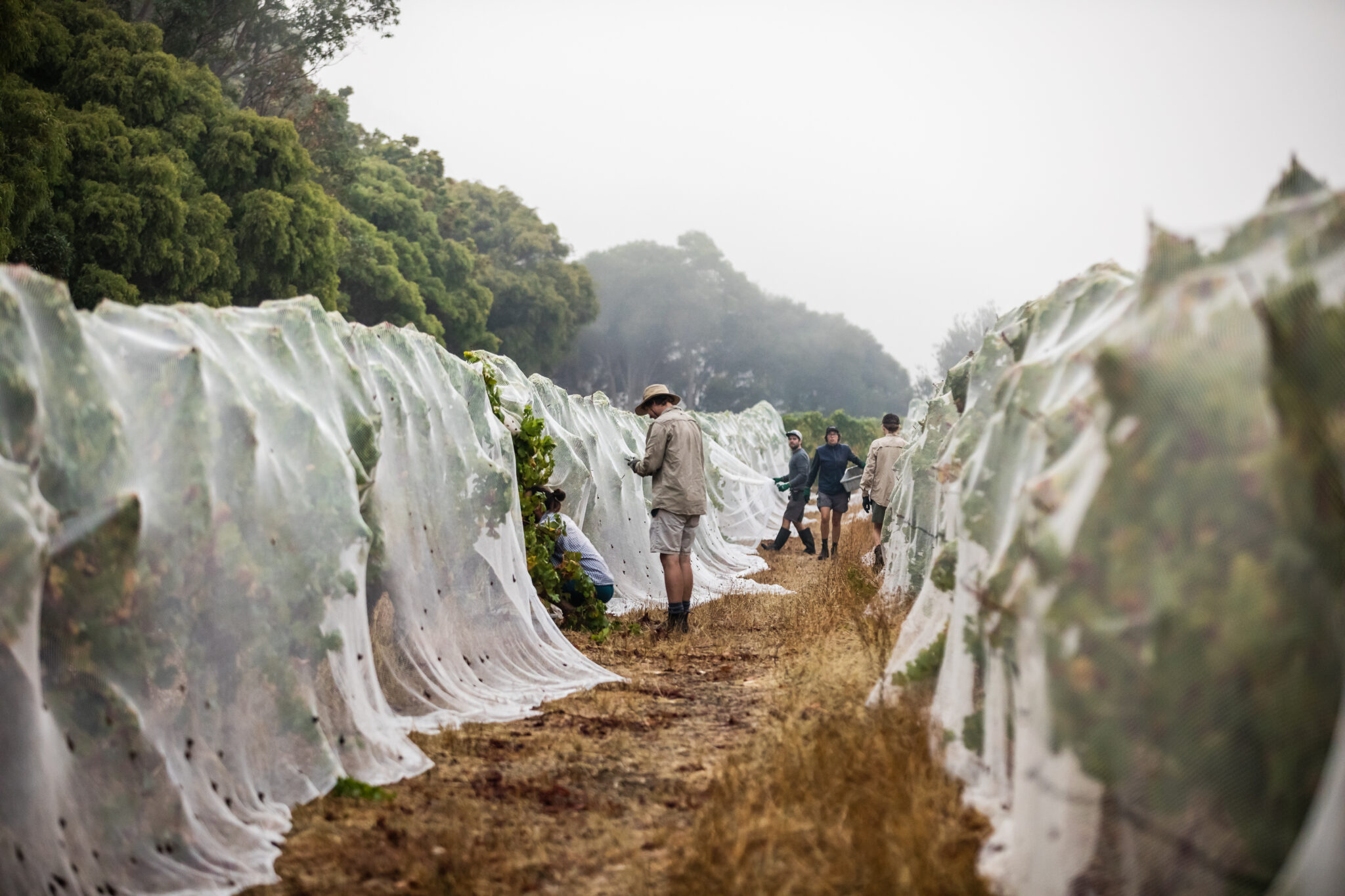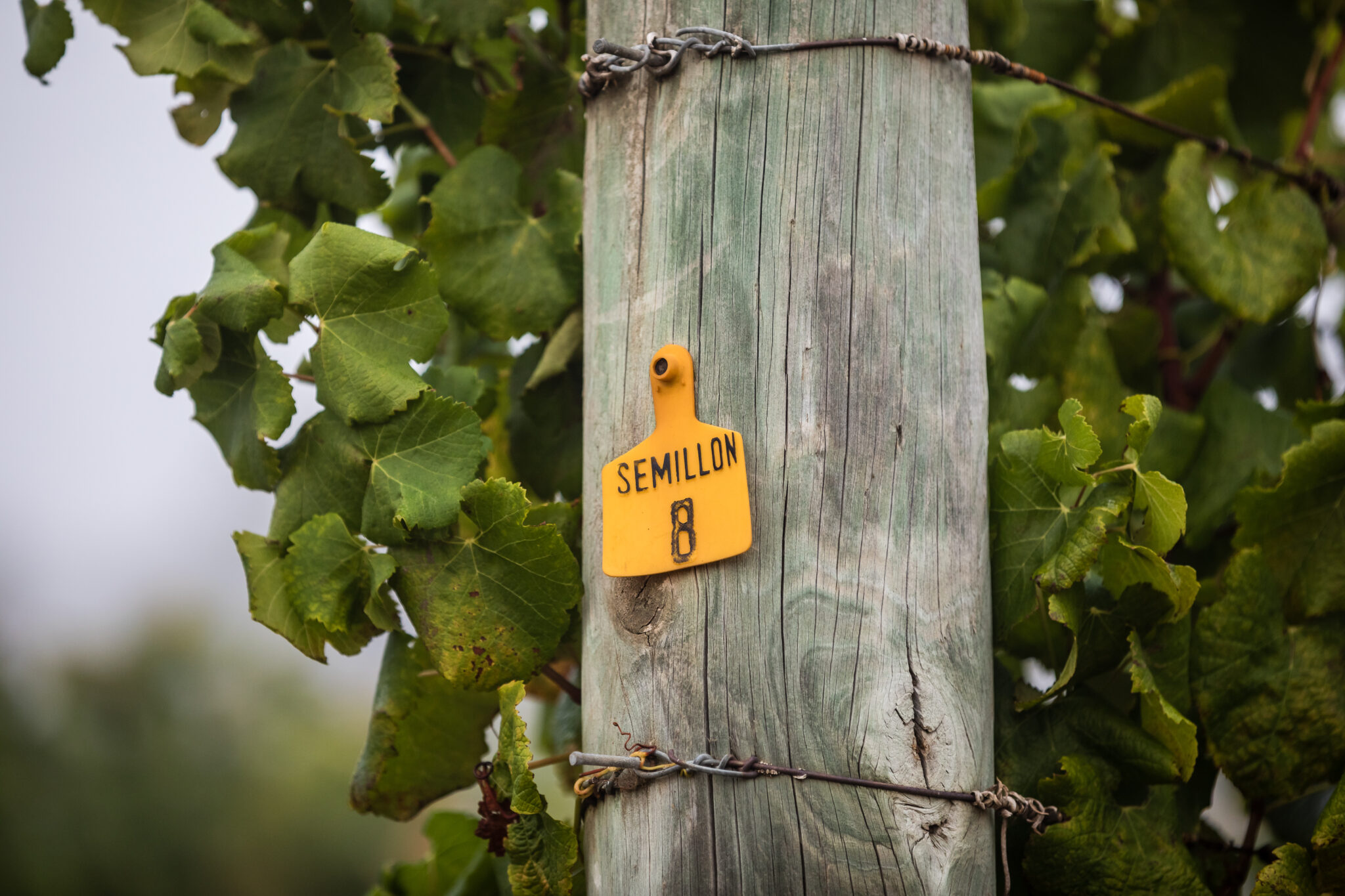Moss Wood Newsletter
Spring News Issue # 114 SEPTEMBER 2022
Moss Wood 2021 Chardonnay
Moss Wood 2020 Pinot Noir
Moss Wood 2022 Semillon
Moss Wood 2021 Chardonnay
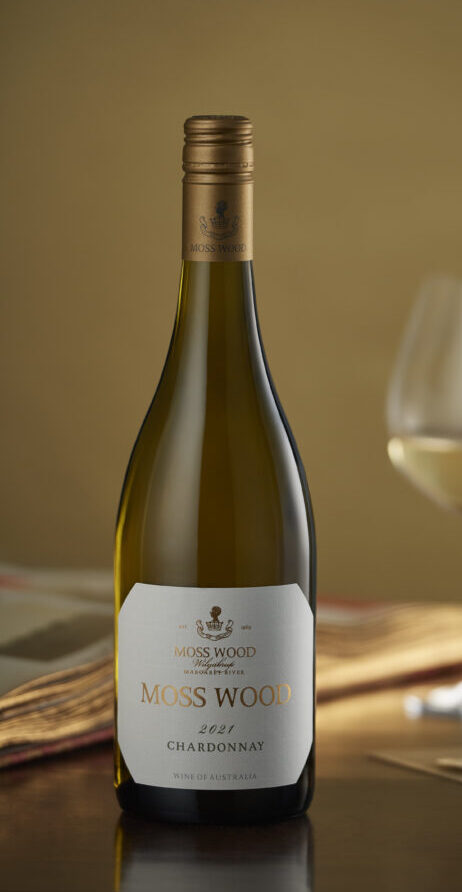
VINTAGE NOTES
In some ways, it’s really quite easy to describe the 2020/21 growing season – long and cool. With an average temperature of 18.6°C, the Chardonnay vines ripened at a very leisurely pace indeed, taking 137 days to progress from flowering to harvest, basically 3 weeks longer than usual. When the fruit came off on the 24th March, it had the very pleasing ripeness of 13.4° Baume, slightly above average, despite the mild conditions. All up, a very satisfying result. It must have been a pretty straightforward season, surely? Well, actually, no, not quite.
The fun started way back in October, 2019, when on the 24th, hail cut a swathe across the Moss Wood vineyard. That was almost 17 months prior to the 2021 vintage, so how can that have affected it? The answer can be seen in the yield, which at 4.89 tonnes per hectare, is down by 27%. More specifically, the bunch numbers were down by around 40%, because the hail damaged both the wood and the buds
that we had available for pruning in 2020 and which gave us the 2021 crop. It’s another reminder that a good hailstorm harms the crops for at least 2 years – the current season and the one following.
The vines can make up a yield deficit if they enjoy good flowering conditions. However, spring 2020 was fairly damp, with 13 of 40 days delivering 97mm of rain, not to mention 8 days when the temperature dropped below 8°C. As a result, those fewer bunches also weighed 20% less than usual.
Mother Nature settled down a bit through December and January, giving mild but benign conditions and we waited patiently for the vines to progress. At the end of the first week of February she changed her mind and gave us her “don’t get too comfortable” warning, delivering 88mm of rain and then a further 40mm at the beginning of March. No wonder farmers complain!
Despite all of the above, our spray program worked well, so we had no disease. In the end, we just needed to be patient and let the fruit reach full ripeness, which it did with ease.
PRODUCTION NOTES
As always at Moss Wood, the fruit was harvested by hand although
when we sent our Afghani pickers into the vineyard they weren’t too happy with the quantity on offer and there was much grumbling in the Hazari patois. Reassurance about the excellent quality didn’t seem to offer much solace.
The fruit was then delivered to the winery, sorted by hand and whole-bunch pressed. The must was settled and then seeded with multiple yeast strains for primary fermentation. On 3rd April 2021, at the halfway stage, the fermenting juice was racked to oak. All the barrels were 225 litre French oak and 50% were new.
Malolactic fermentation then took place and once completed, all the barrels were racked and blended in stainless steel, adjusted with SO2 and then the finished wine was returned to oak.
There it stayed until 18th July 2022 when all the barrels were again racked and blended in stainless steel. Fining trials were carried out but none improved the wine’s balance and so it was fined only with bentonite for protein stability. It was then cold stabilized and sterile filtered into bottle on 3rd August 2022.
TASTING NOTES
Colour and condition :
Medium straw hue with green tints. Bright condition.
Nose :
An absolutely typical Moss Wood Chardonnay showing all the vineyard’s classical features but with the added intensity from the mild season. There are bright fruit aromas of melon, peach and lime, with a complex background of roast cashews and almonds, crème caramel and honey. The final note is a soft, lightly toasty oak.
Palate:
The influence of the cool season also shows up nicely on the palate, where the wine displays full body but crisp acidity. This amplifies the bright peach and melon flavours, followed by caramel and a touch of oak. There is some tannin on the finish but they are nicely balanced by the fruit generosity.
Cellaring:
Given the very high quality of the year, we strongly recommend the 2021 for cellaring and suggest a minimum of 10 years for some bottle development but it can be aged well beyond 20 years to reach full maturity. However, there is one proviso, it is very enjoyable now and will tempt even the most dedicated cellaring person.
| Wine Facts | |
|---|---|
| Median Harvest Date | 24th March, 2021 |
| Harvest Ripeness | 13.4° Baume |
| Yield | 4.89 t/ha |
| Growing Season Ave Temperature | 18.6°C |
| Number of hours accrued between 18 and 28°C | 1206 hours |
| Number of hours above 33°C | 21 hours |
| Day Elapsed between Flowering and Harvest | 137 days |
| Bottled | 3rd August, 2022 |
| Alcohol | 14.00% |
Moss Wood 2020 Pinot Noir
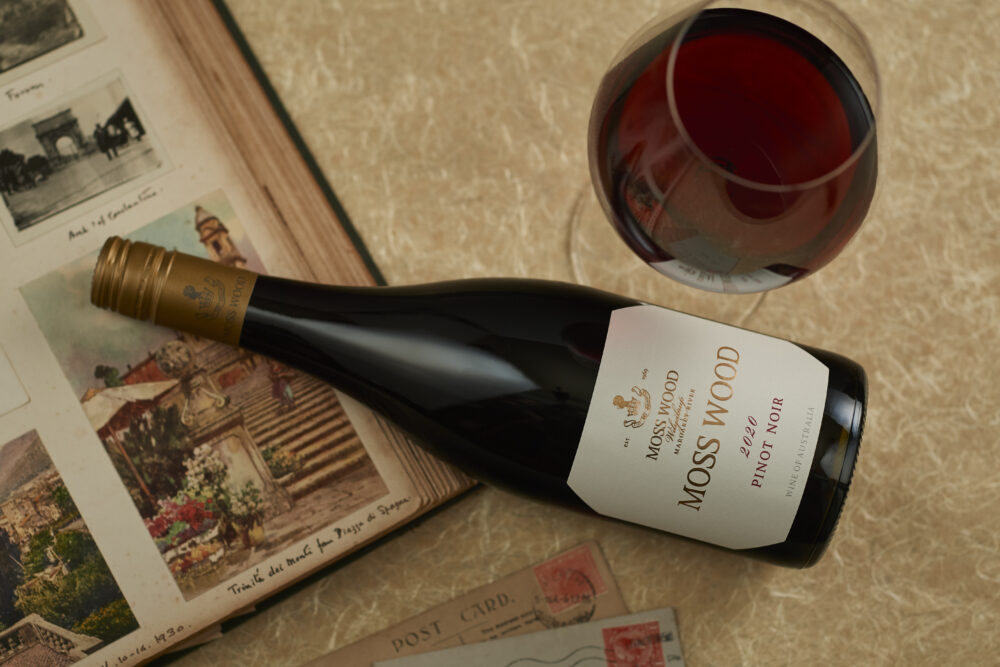
Vintage Notes
As mentioned in the discussion of the 2021 Moss Wood Chardonnay, the key story of the 2019/20 growing season was the hailstorms that hit the Margaret River region on 24th October. Moss Wood and Ribbon Vale weren’t spared and all varieties were impacted.
With hail damage, there’s very little we can do, other than treat the vineyard to ensure we don’t get secondary fungal infections on damaged vine tissue, so we applied a fungicide and waited for vintage to see exactly how bad the result actually was.
Apart from this rather aggressive outburst, Mother Nature was very kind to us. We had only limited rain during flowering and only one day where the temperature dropped below 8°C. At least this ensured the remaining bunches were able to flower in good conditions and maximise whatever crop was left. We were thankful for small mercies!
The season progressed with some nice warm weather and the vines enjoyed 1152 hours between 18°C and 28°C, plus 68 hours above 33°C. Between this and the tiny crop, the fruit charged through to ripeness, taking 98 days to go from flowering to harvest at 14° Baume on 12th February, 11 days earlier than average.
We have this thing with low yielding years where during the season, we assess the crop and when the estimates are really low, we invariably think, no, it can’t be that bad. Of course, when the crop comes in, our unrealistic optimism is exposed when the fruit finally arrives at the winery weigh bridge. So, it was in 2020, when the weighing scales revealed the bad news of a yield of 3.00 tonnes per hectare, down 52% and our lowest ever.
To digress for a moment, there is much debate about the relationship between grape yield and wine quality. In France, the figure of 40 hectolitres per hectare of wine, or roughly 6 tonnes per hectare of grapes, is considered the benchmark for high quality yields.
Above that, quality may be reduced, depending on the season. Typically, the warmer and drier the year, the better will be the quality at yields higher than this.
Our experience roughly confirms this although there are differences between our varieties. For example, Moss Wood Cabernet Sauvignon can produce wines with very firm tannin in the low yielding vintages and these are slightly atypical. Conversely, the opposite tends to be true at the other end of the yield scale and a good example is 2001, a really outstanding vintage, which cropped at 9.55 tonnes per hectare.
Returning to Pinot Noir, we’ve found it produces its best quality at lower yields and 6 tonnes per hectare seems to be about right. Indeed, prior to 2020, our lowest yielding Pinot was the 1981 and at 3.48 tonnes per hectare, was the greatest wine our vineyard has produced. The 2020 vintage, at even slightly lower yields, has delivered a similarly outstanding quality year.
Production Notes
All the fruit was hand-picked and delivered to the winery where it was hand-sorted, destemmed, placed in small, open fermenters and seeded with multiple yeast strains for primary fermentation. Temperatures were controlled to a maximum of 32°C and each batch was hand plunged 3 times per day for extraction of colour and flavour.
After 16 days on skins, each batch was pressed to stainless steel tank and underwent malolactic fermentation. The wine was then racked off gross lees, adjusted and racked to wood on 4th March 2020. All barrels were 225 litre French oak and 23% were new.
On 26th October 2021, after 19 months in oak, all the barrels were racked and blended in stainless steel. In preparation for bottling, fining trials were carried out but no treatment improved the wine so it remained unfined and was sterile filtered and bottled on 1st November 2021.
Tasting Notes
Colour and condition:
Deep ruby hue; bright condition.
Nose:
Bright fruit aromas set the tone, with red fruits of strawberries and strawberry jam, combining with black fruits of cherry and plum. There is a rich background of musk, earth and spicy, toasty oak.
Palate:
The same intensity shows on the palate where generous strawberry and cherry fruit flavours fill the mouth, supported by full body and good acidity. There are earthy and tarry notes on the finish. The tannins are quite dense and mouth-filling for a Pinot Noir, giving the wine a long, smooth finish.
Cellaring:
In our commentary above, we referred to the mighty 1981 Pinot Noir as an example of the high quality our low-yielding years can offer and it sailed comfortably past 40 years of age in 2021 and looked fantastic. Although 2020 was a slightly warmer and earlier vintage than its older sibling, it has similar concentration and power, exactly the makeup it needs to deliver 4 decades in the cellar. If this is somewhat daunting, we share two other thoughts. It has delicious flavour and balance and can definitely be enjoyed now and for those who would like to see just a little bit of development in the bottle, we recommend short term cellaring of 10 years.
| Wine Facts | |
|---|---|
| Median Harvest Date | 12th February, 2020 |
| Harvest Ripeness | 14.0° Baume |
| Yield | 3.00 t/ha |
| Growing Season Ave Temperature | 20.7°C |
| Number of hours accrued between 18 and 28°C | 1152 hours |
| Number of hours above 33°C | 68 hours |
| Day Elapsed between Flowering and Harvest | 98 days |
| Bottled | 1st November, 2021 |
| Alcohol | 14.00% |
Moss Wood 2022 Semillon
Vintage Notes
After the complicated stories of the 2021 Chardonnay and 2020 Pinot Noir, we are delighted (and relieved) to report the 2021/22 season was near-perfect. Conditions were warm and dry and we have to go back to 1983 for a similar year.
Mother Nature was in a relaxed mood for the entirety of the season. For example, calendar year 2021 is one of our wettest years on record, 44% above average and yet, just as the Semillon started flowering in mid-November, the rain stopped. Conditions remained dry and temperatures were warm, with only one day below 8°C.
Hot conditions prevailed right through the summer, including the hottest days since February 1985, when the mercury peaked at 40.2°C on 26th December 2021 and 40.1°C on 19th January 2022. In fact, across the full season, the Semillon enjoyed 118 hours above 33°C. We didn’t lack for warmth!
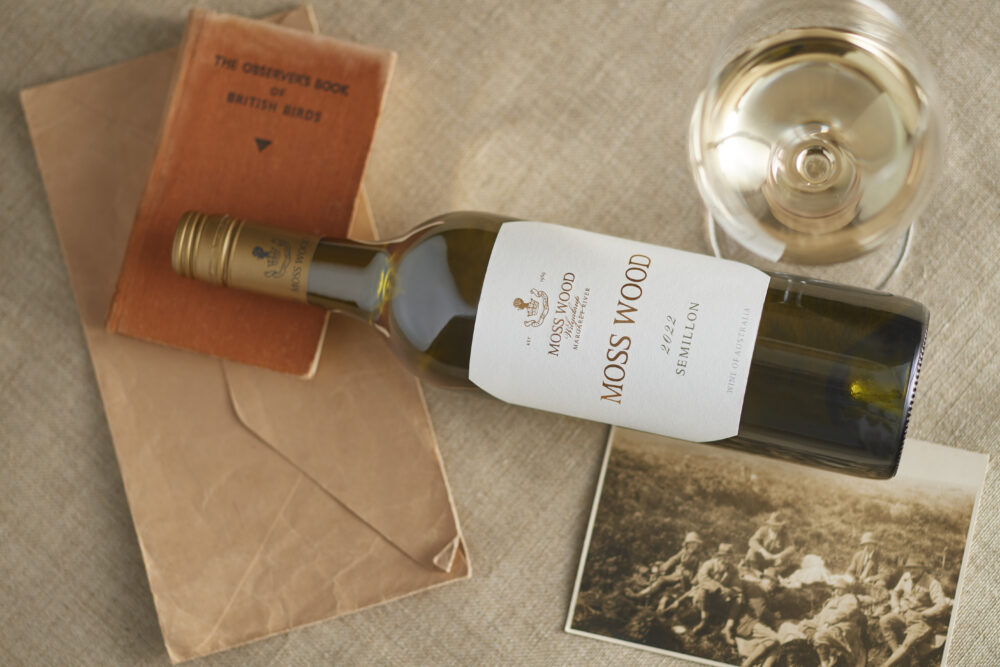
With everything going in our favour, we had high hopes when we started picking on 19th March 2022 and we weren’t disappointed. The ripeness came in at 13.5° Baume, slightly above the average of 12.8° and yields were a creditable 9.06 tonnes per hectare, a mere 6% down, not bad at all for a vineyard celebrating its 50th birthday this year.
Reflecting on the 1983 Moss Wood Semillon, that particular vintage expressed clear, ripe fruit aromas of ripe figs and excitingly for us, the 2022 vintage has big dollops of exactly the same thing. Given they were similarly warm years, this doesn’t come as a surprise but it’s still a thrill to see that intensity. To give some context to these comments and for those interested in a bit of history, the 1983 Moss Wood Semillon was our most successful white wine ever in the wine show system. At the 1983 Perth Royal Show it was awarded a Gold Medal and received the trophy for the Best Western Australian White Wine in the show. This was donated by the Rural and Industries Bank and included a cash prize of $500, no insignificant amount in those days. The owners of Moss Wood at the time, Bill and Sandra Pannell, very generously allowed one Keith Mugford to pocket the proceeds. It was quite a day!
Production Notes
The production steps were very much in line with our traditional recipe, apart from one small change. The fruit was hand-picked and delivered to the winery where it was hand-sorted and then whole-bunch pressed.
At this point, we introduced a new technique.
In the past, the pressed juice was clarified using cold settling, a process that uses enormous amounts of energy to chill the juice down and hold it at 10°C for several days. For 2022, we introduced flotation, where the solids are floated to the surface and the clear juice taken from underneath. The juice is held at 18°C and clarified in a few hours. The energy and time savings are huge, not to mention the juice proceeds quickly into primary fermentation, reducing the risk of oxidation.
After this, the must was inoculated for primary fermentation with multiple yeast strains and ferment temperatures were controlled to 18°C.
Just to be clear, the wine had no contact with wood, either for fermentation or for aging. It is made in the classic, fruit-dominant Australian style and was held only in stainless steel tanks.
Once the sugar level reached dryness, the wine was racked off gross lees, fined with bentonite for protein stability and then cold stabilised. It was sterile filtered and bottled on 7th July 2022. We always bottle the Semillon as quickly as we can to capture as much of its youthful fruit notes as possible.
Tasting Notes
Colour and condition:
Pale to medium straw hue, with green tints; bright condition.
Nose:
bright, lifted aromas of ripe figs, some lemon and granny smith apple notes, with a touch of lanolin and mushroom in the background.
Palate:
The initial impression is one of generous, long fruit flavours, consisting on figs, apple and preserved lemon. There is good weight and length, with fresh acidity and some soft tannins on the finish.
Cellaring:
For those with the patience and the room in their wine fridges, or, better still, in their cellar, if you enjoy old Semillon, this will be a worthy addition and will repay long term aging. It will need at least 10 years to show bottle complexity in the form of some buttery and toasty notes but at least a further 10 years for them to become dominant. In the meantime, for those who enjoy the generous fruit notes of young white wines, it offers very good drinking in the meantime.
| Wine Facts | |
|---|---|
| Median Harvest Date | 19th March, 2022 |
| Harvest Ripeness | 13.5⁰Be |
| Yield | 9.06 t/ha |
| Growing Season Ave Temperature | 21.1⁰C |
| Number of hours accrued between 18 and 28⁰C | 961 hours |
| Number of hours above 33⁰C | 118 hours |
| Days Elapsed between Flowering and Harvest | 113 days |
| Bottled | 7th July 2022. |
| Alcohol | 14.50% |
Order
OUR WINES:
Contact
MOSS WOOD:
Location: 926 Metricup Road, Wilyabrup WA
Postal: PO Box 225, Cowaramup WA 6284
Phone: +61 8 9755 6266
Fax: +61 8 9755 6303
Follow us on
SOCIAL MEDIA:

